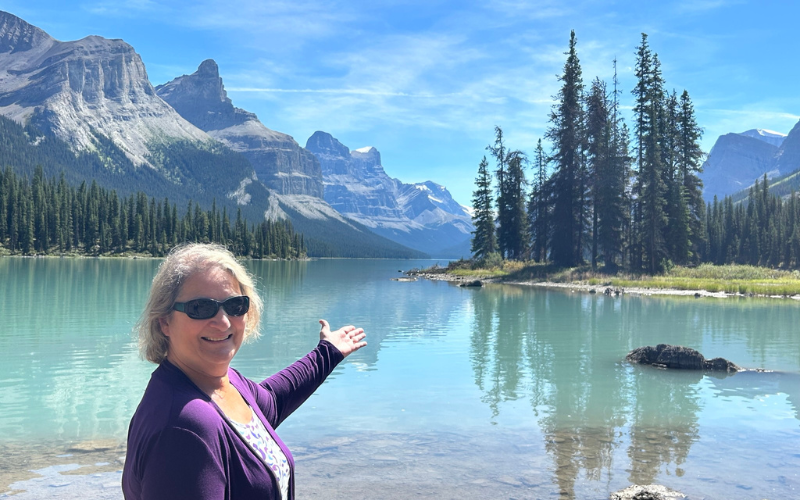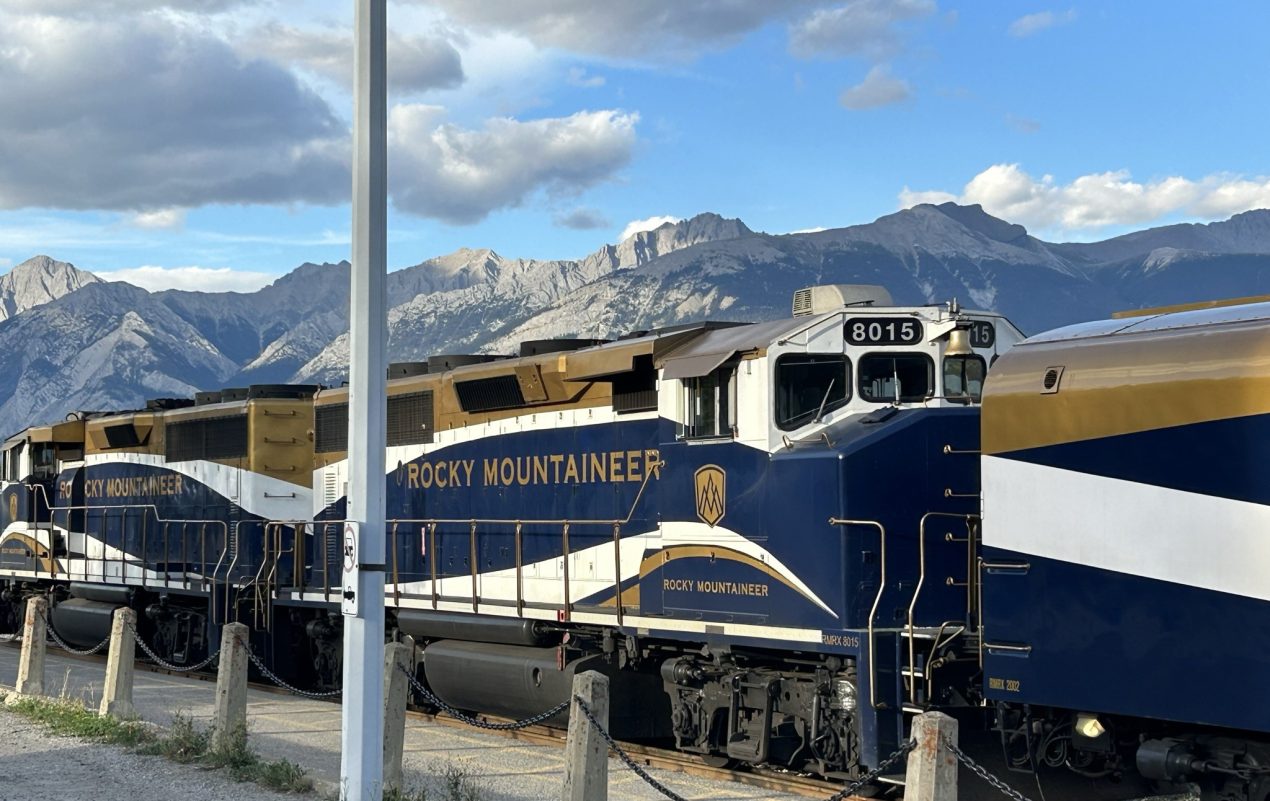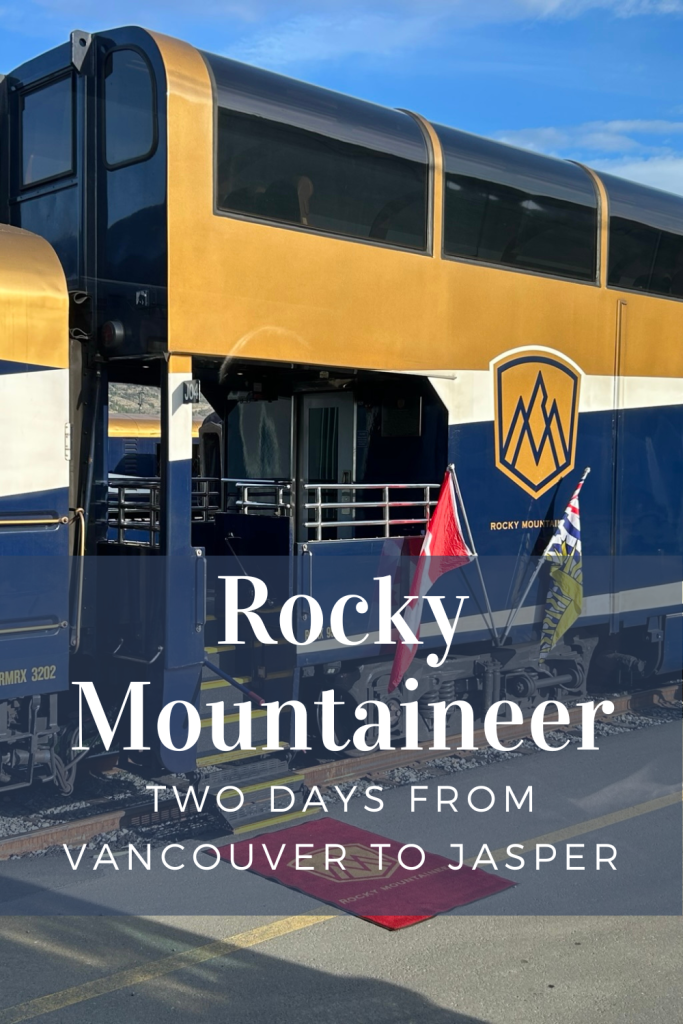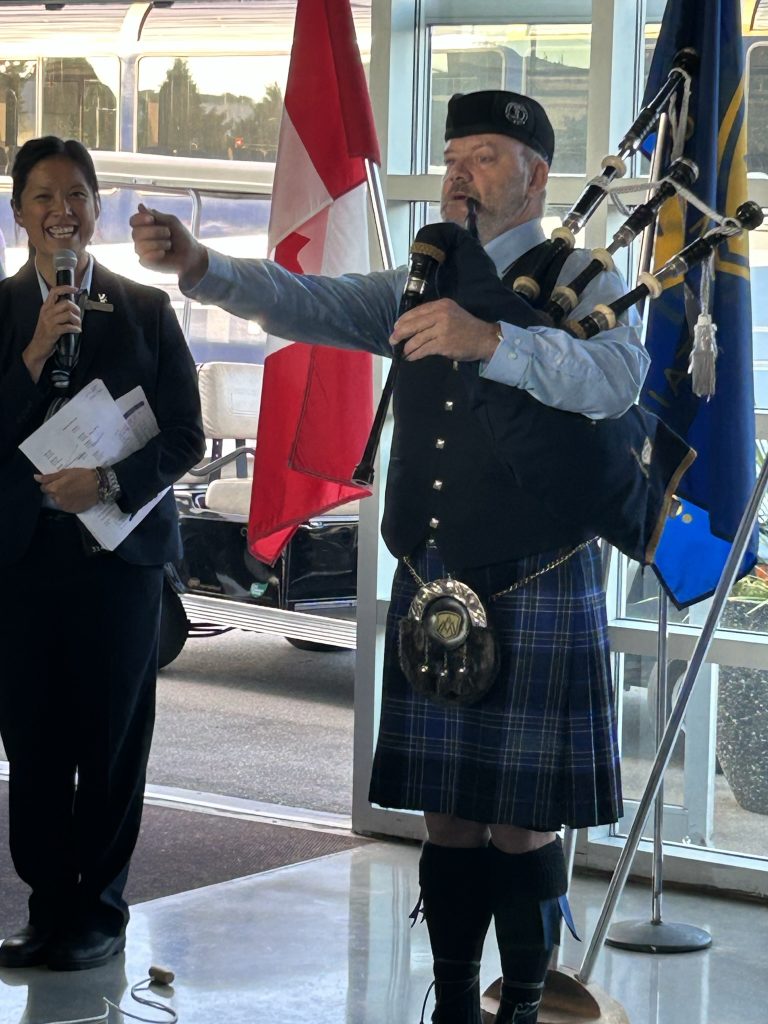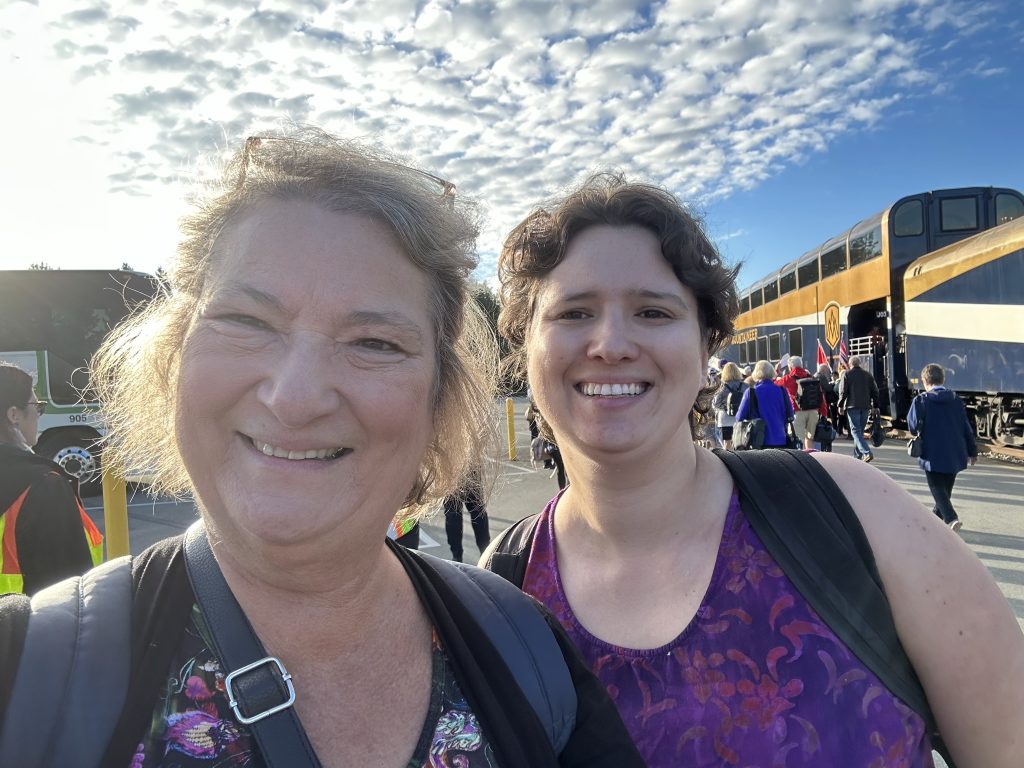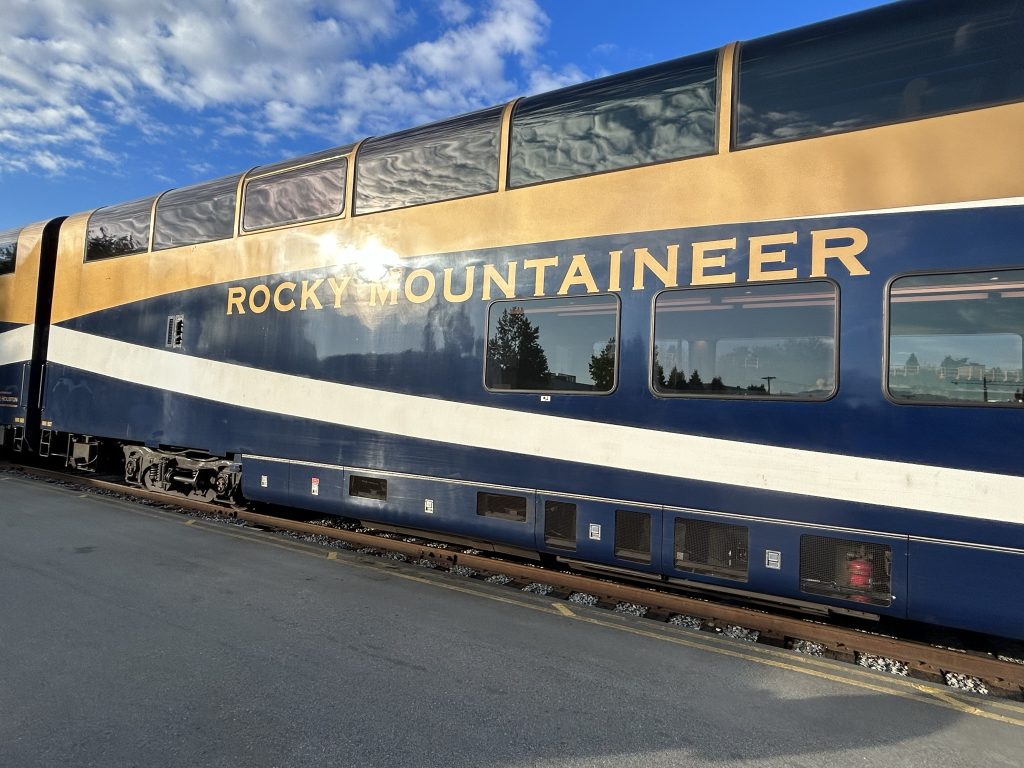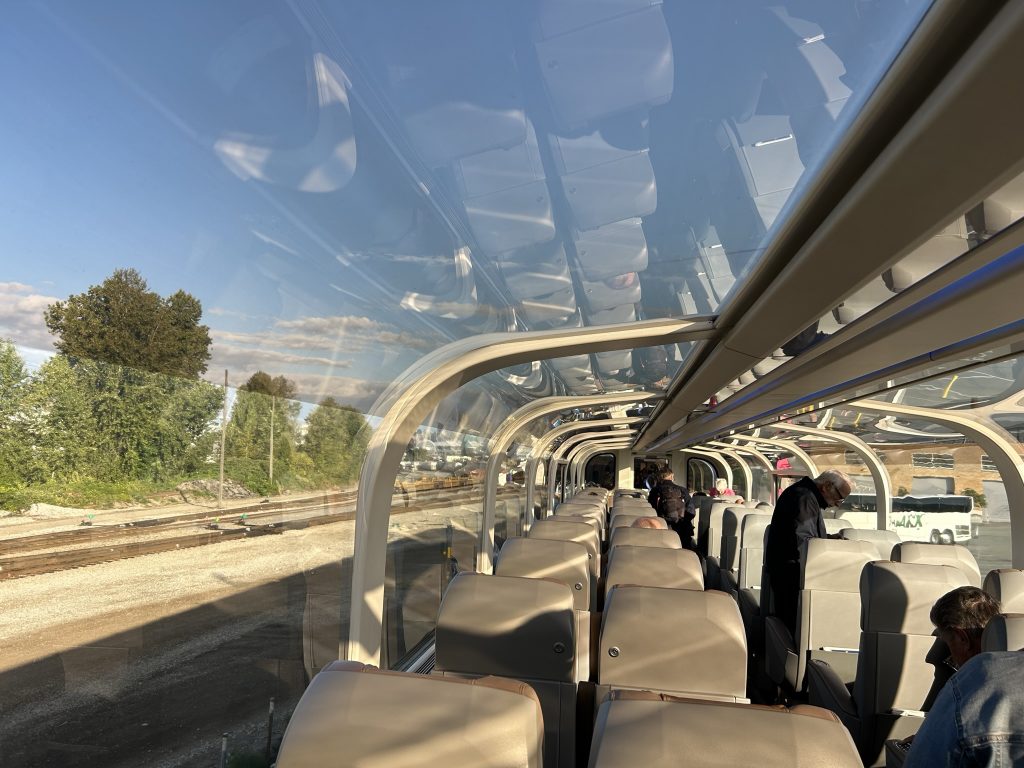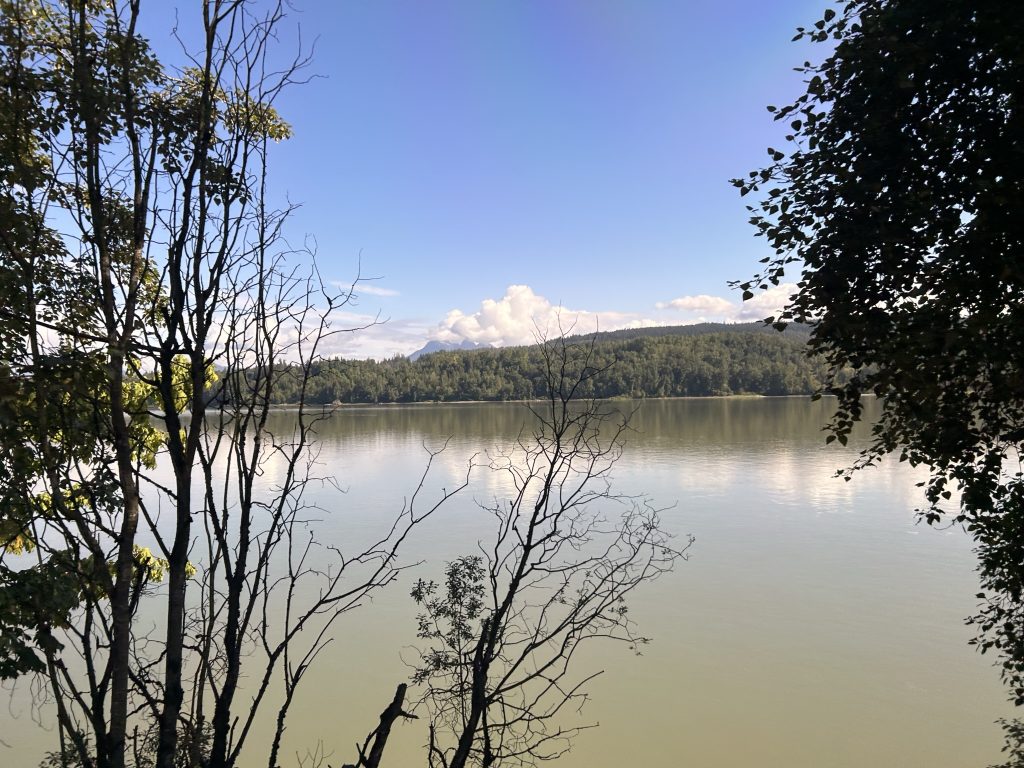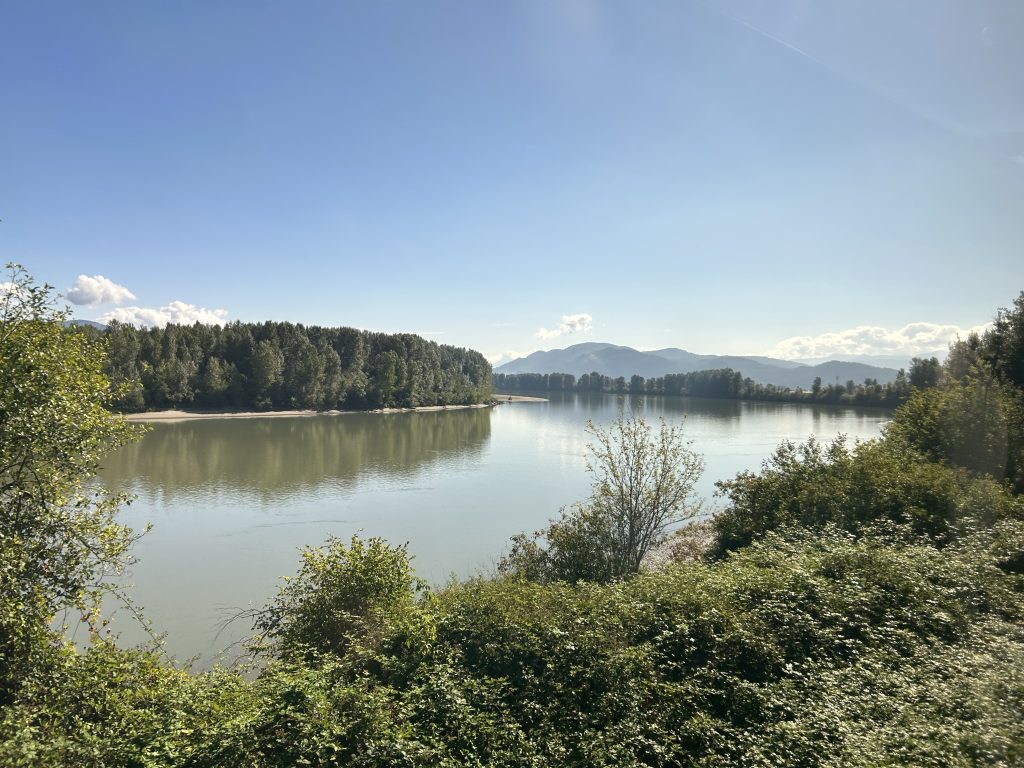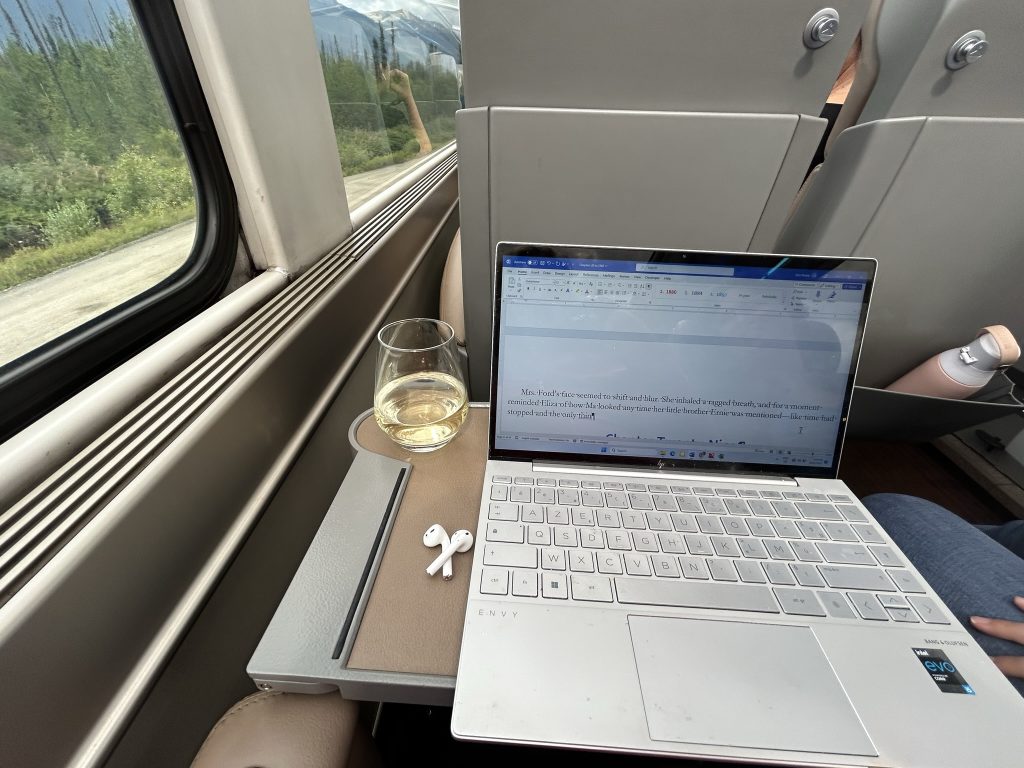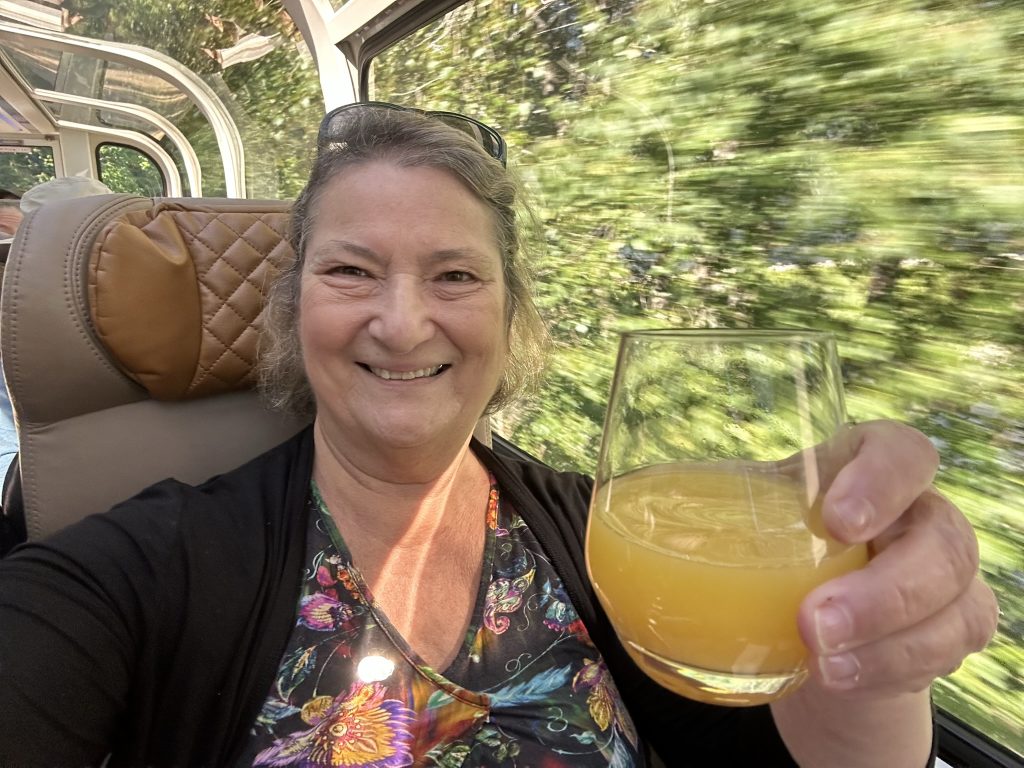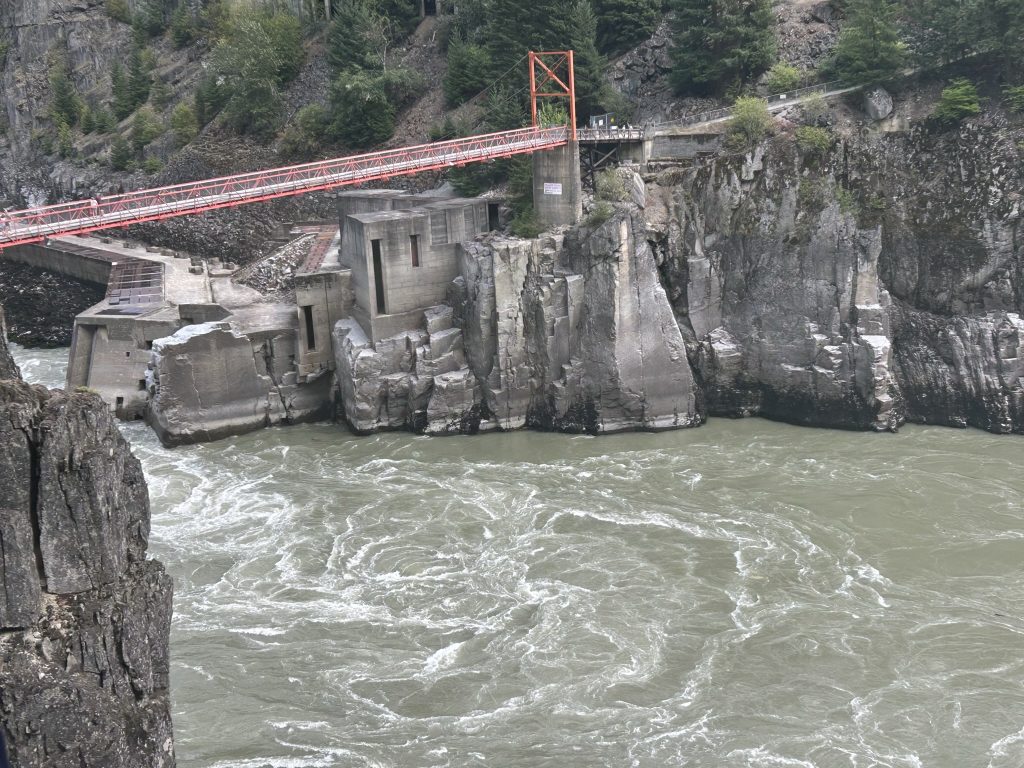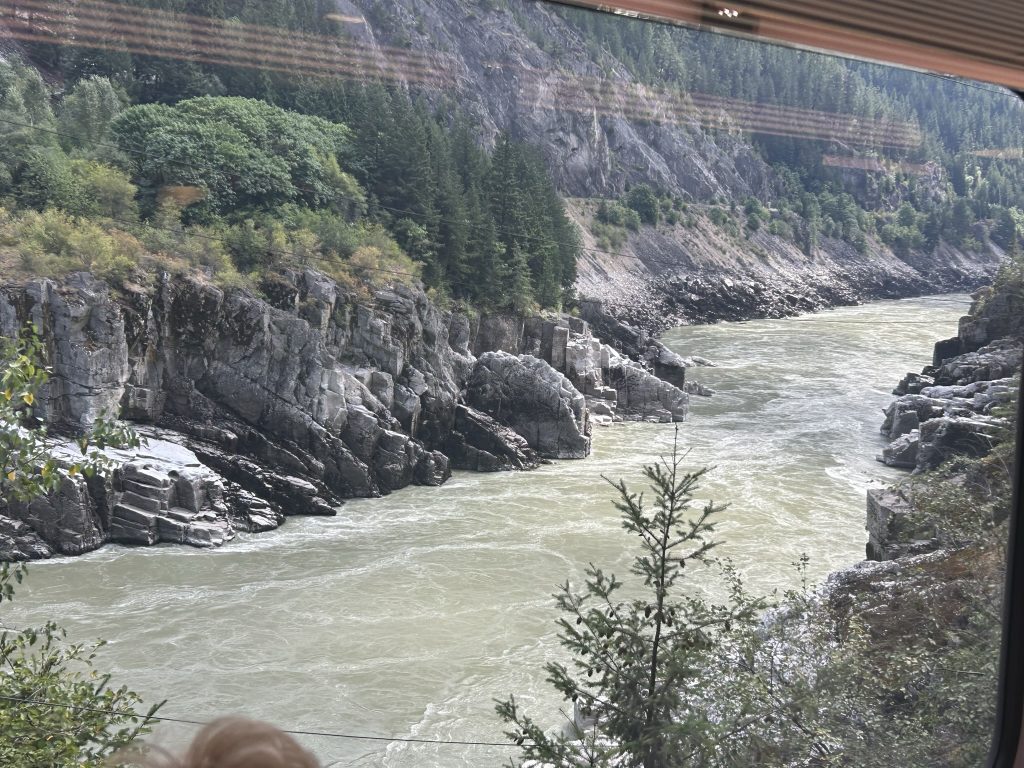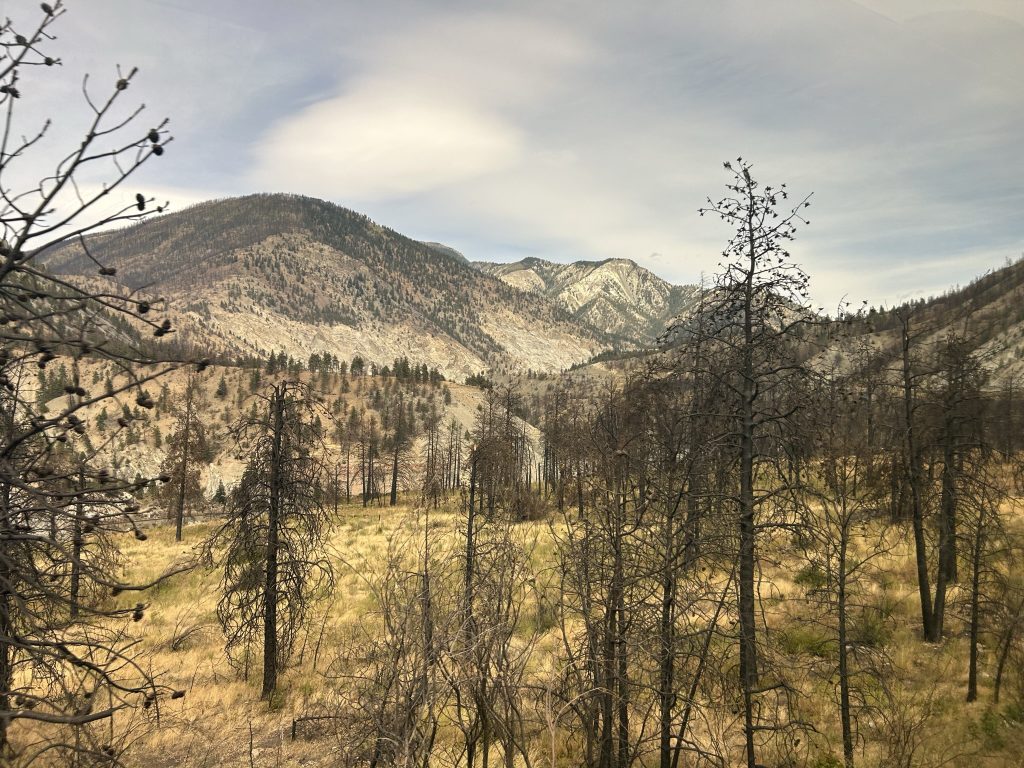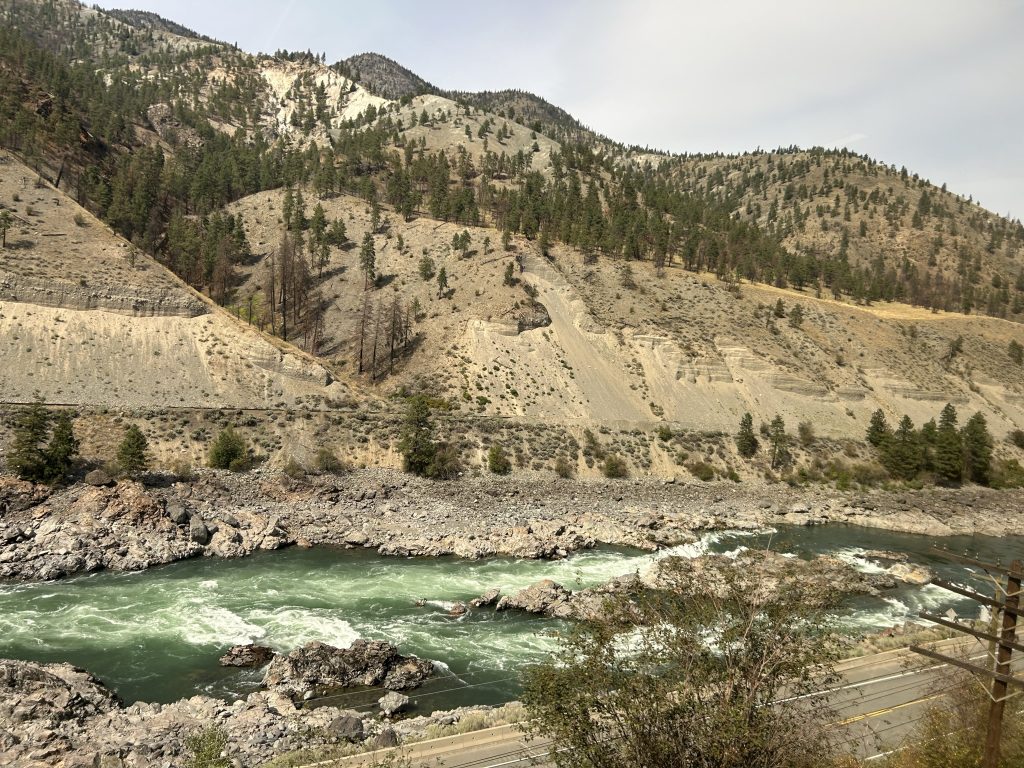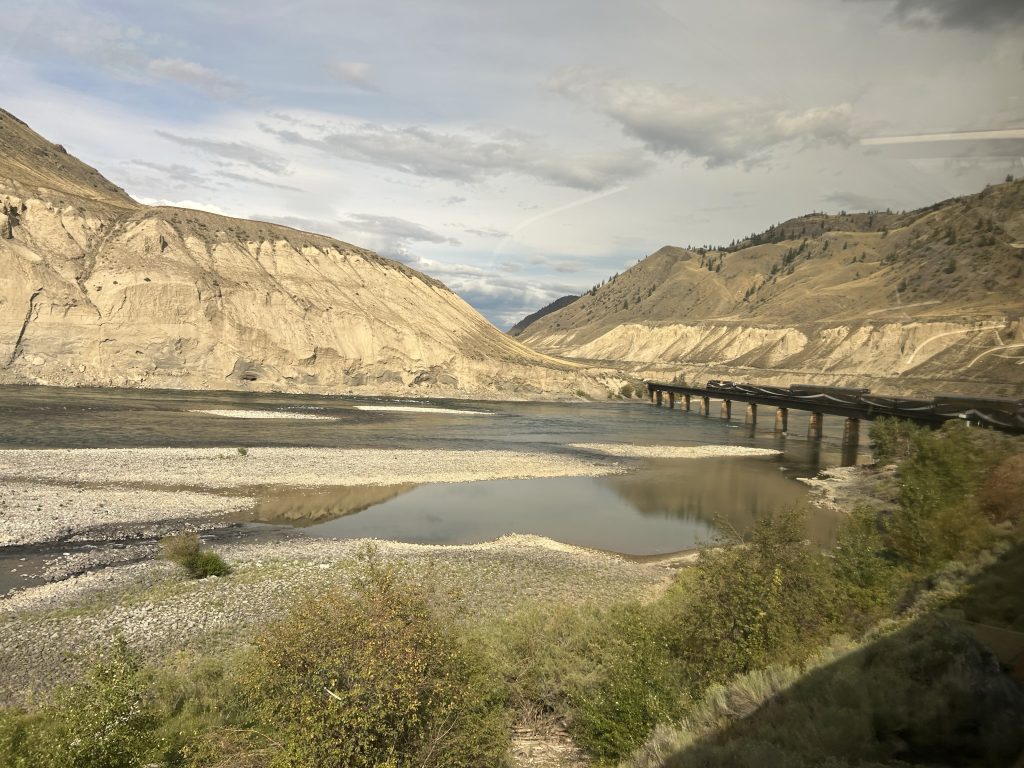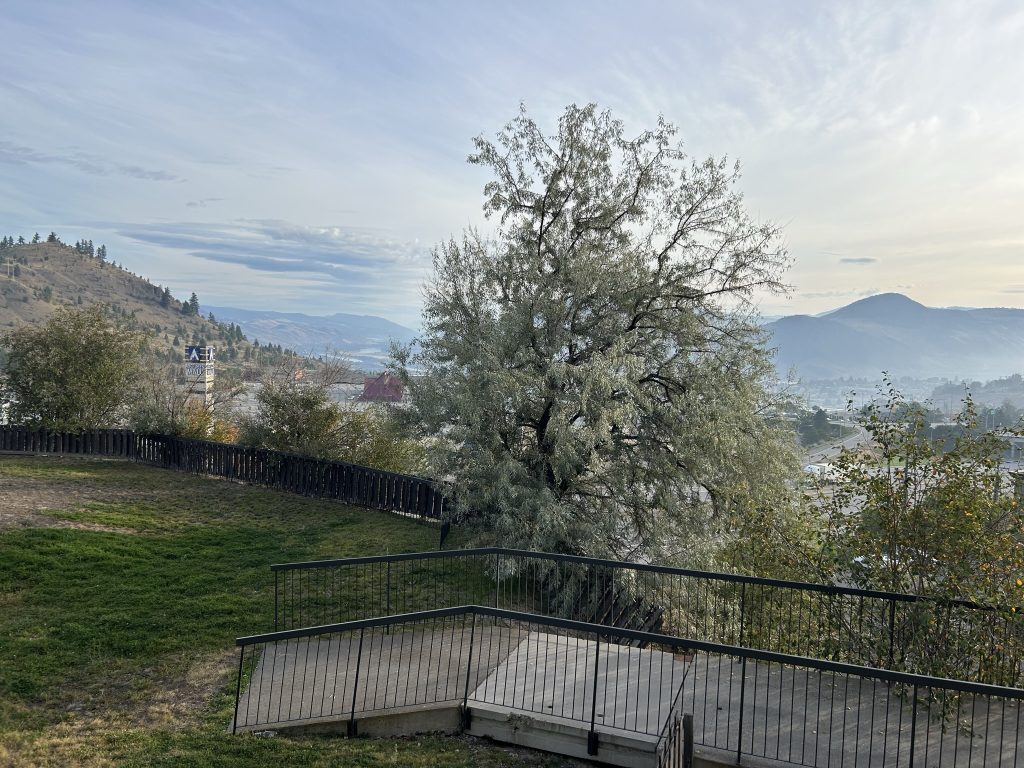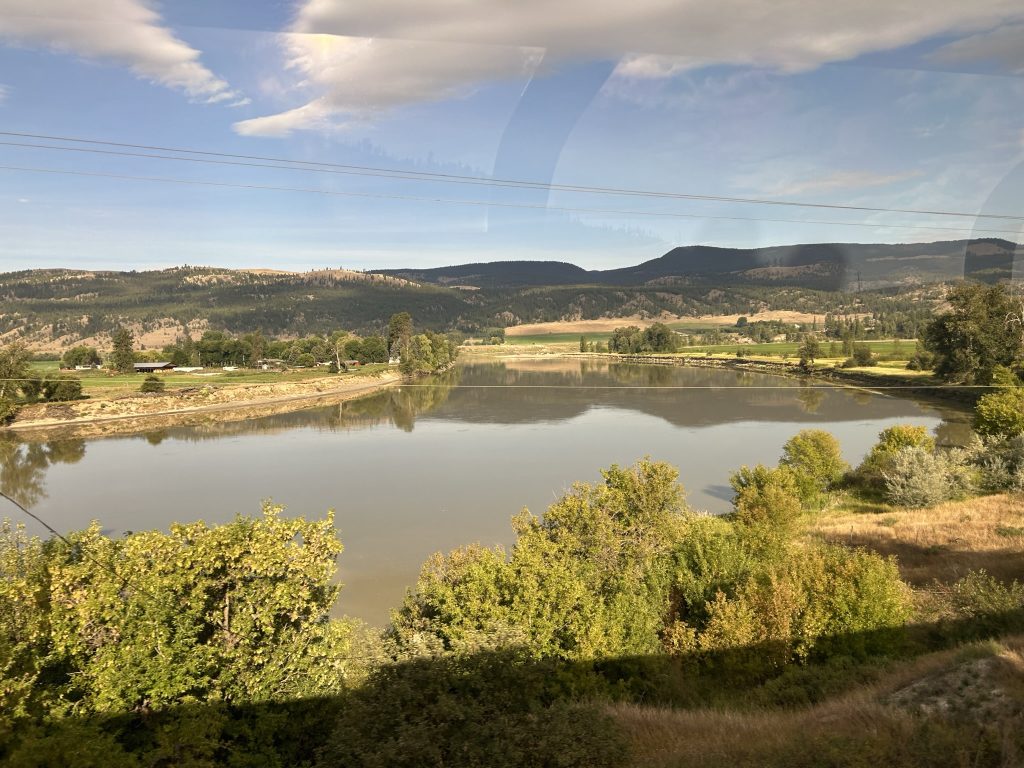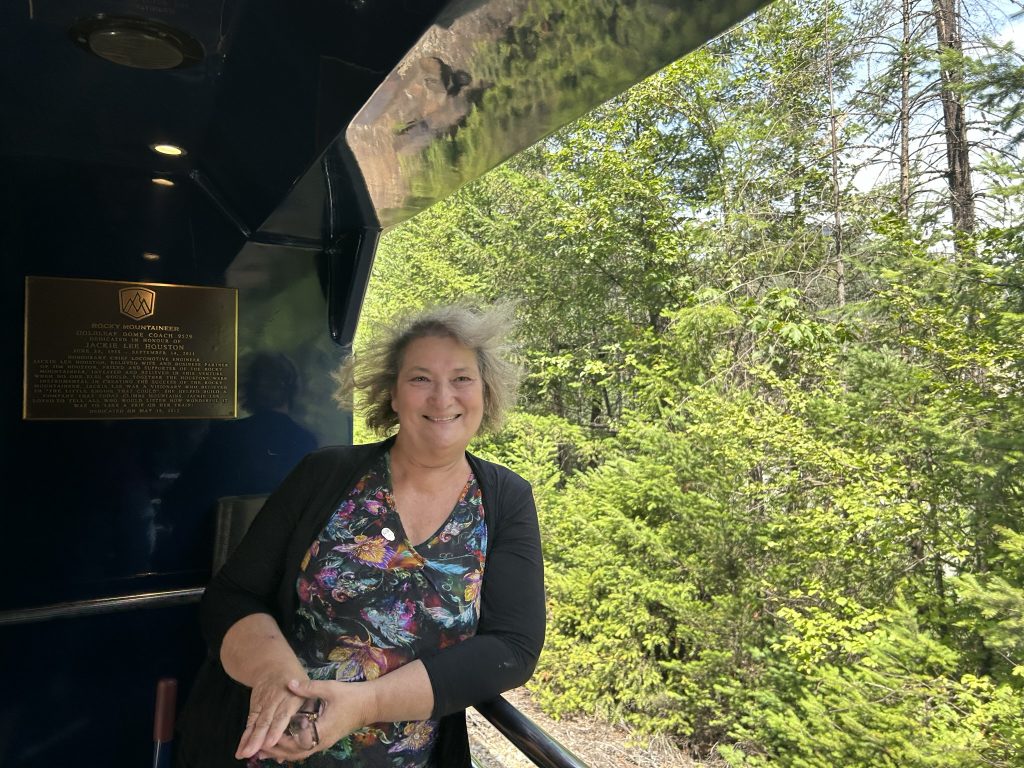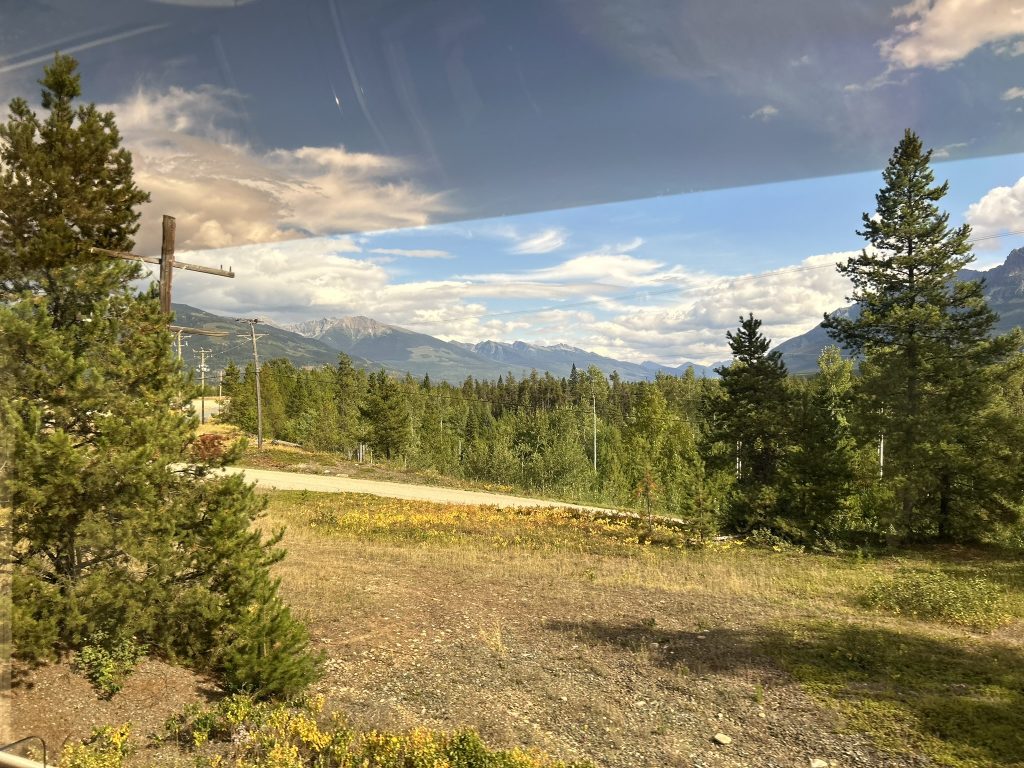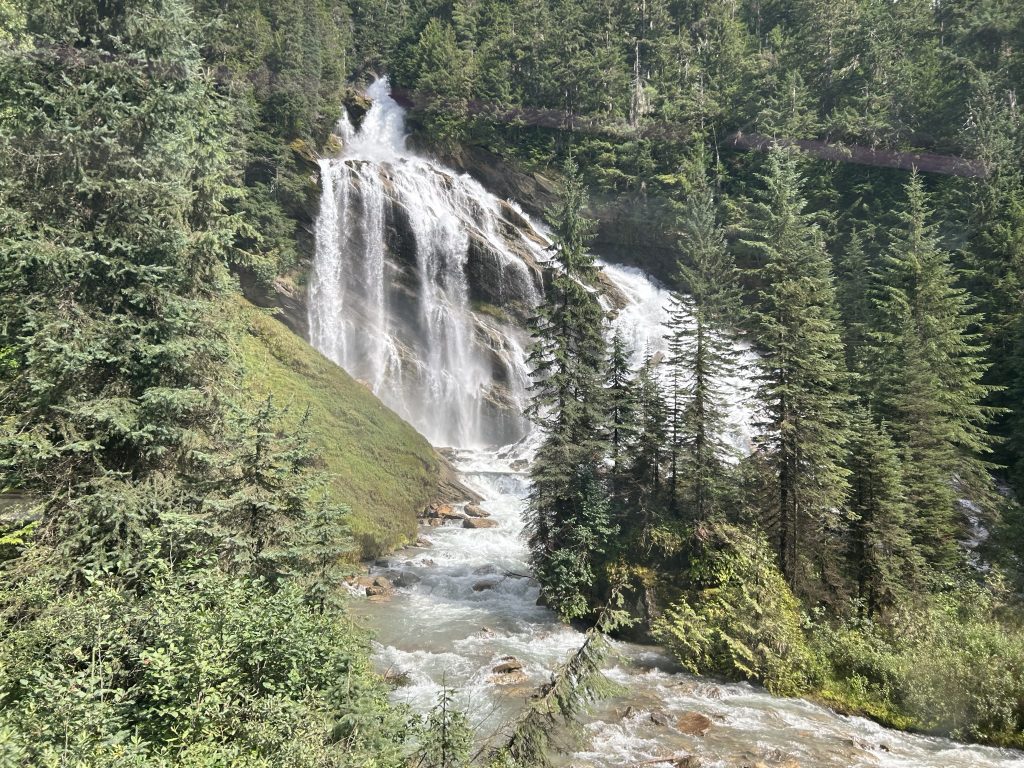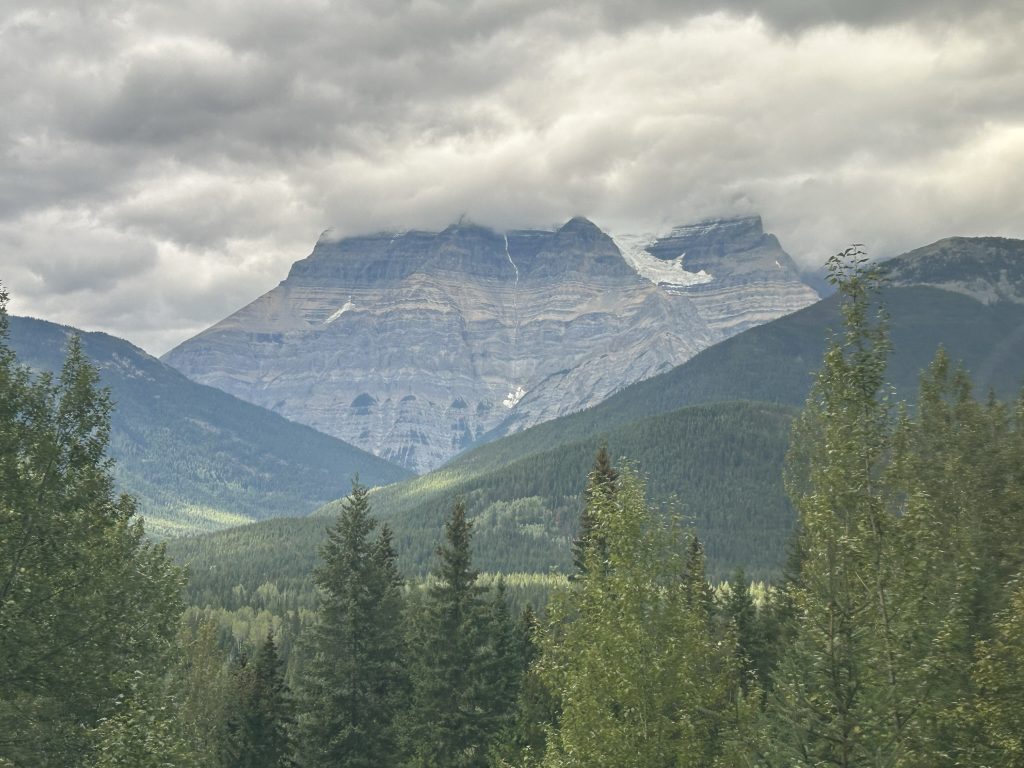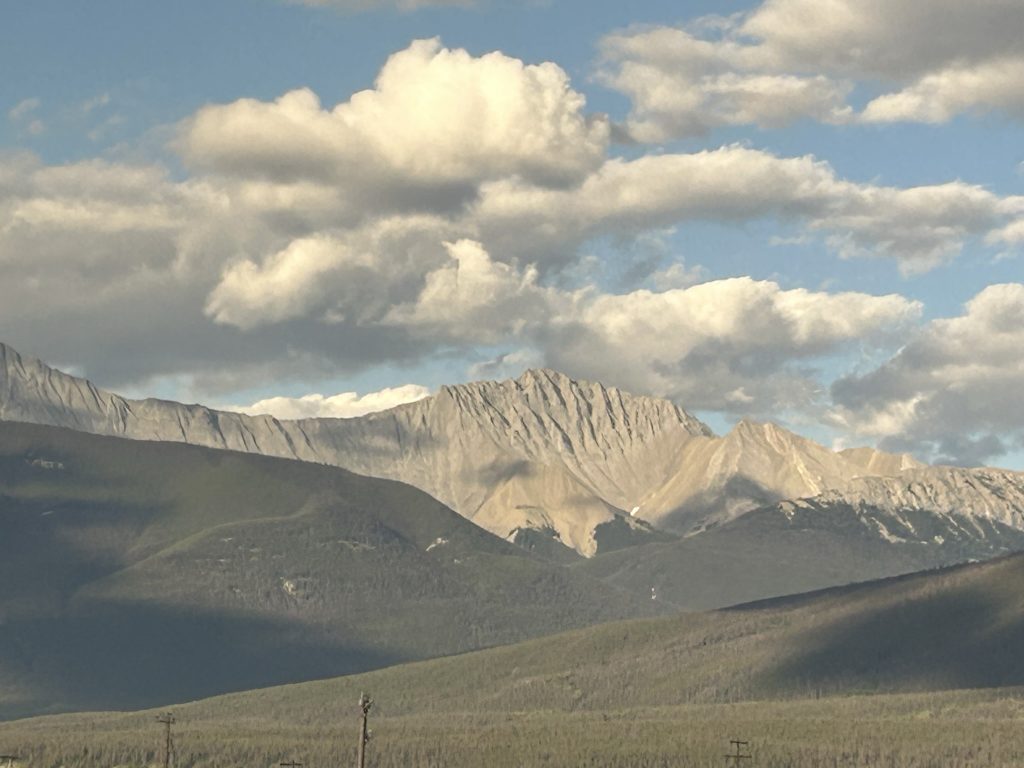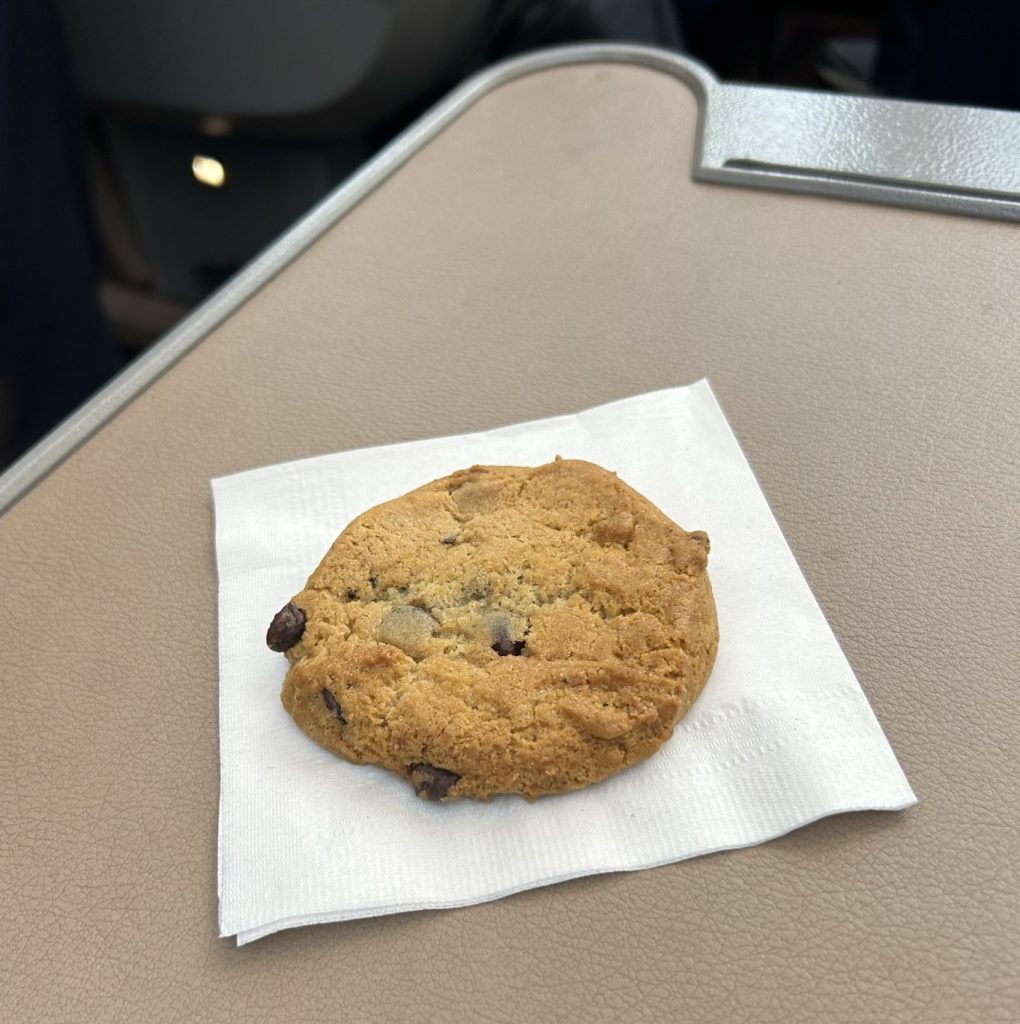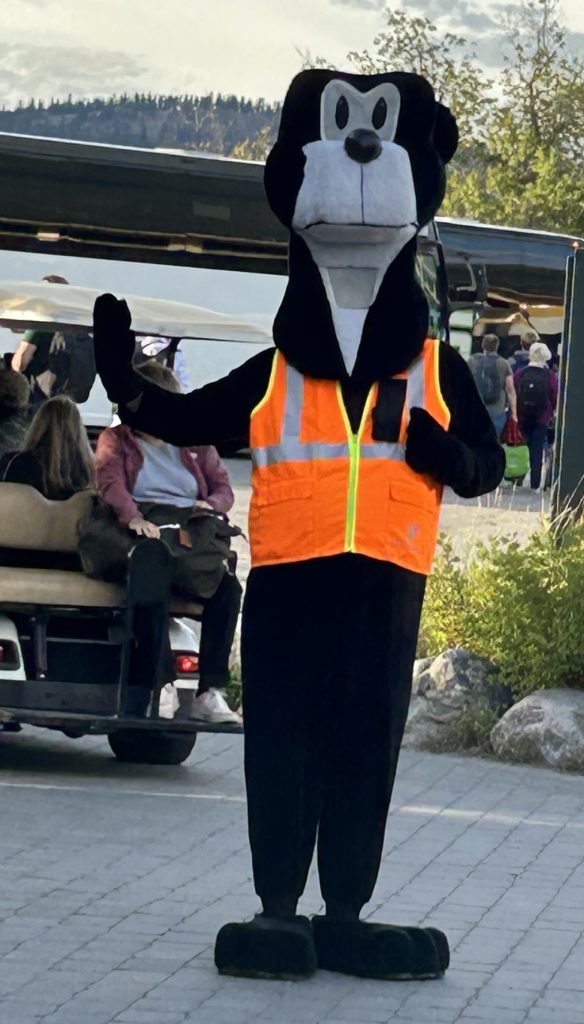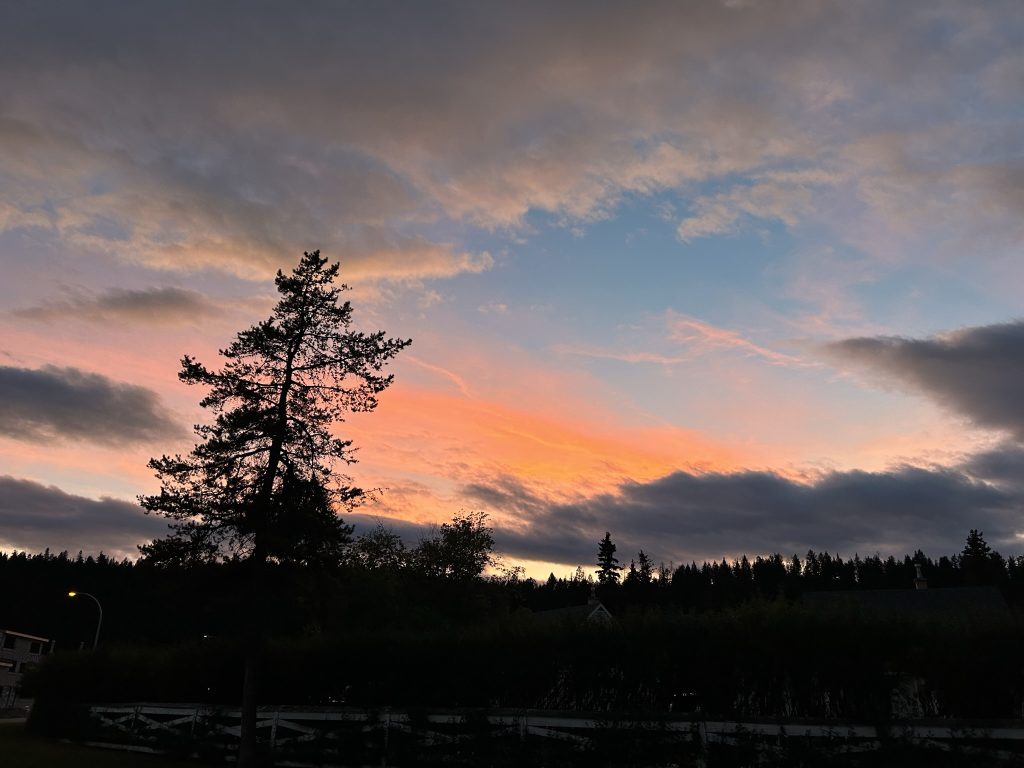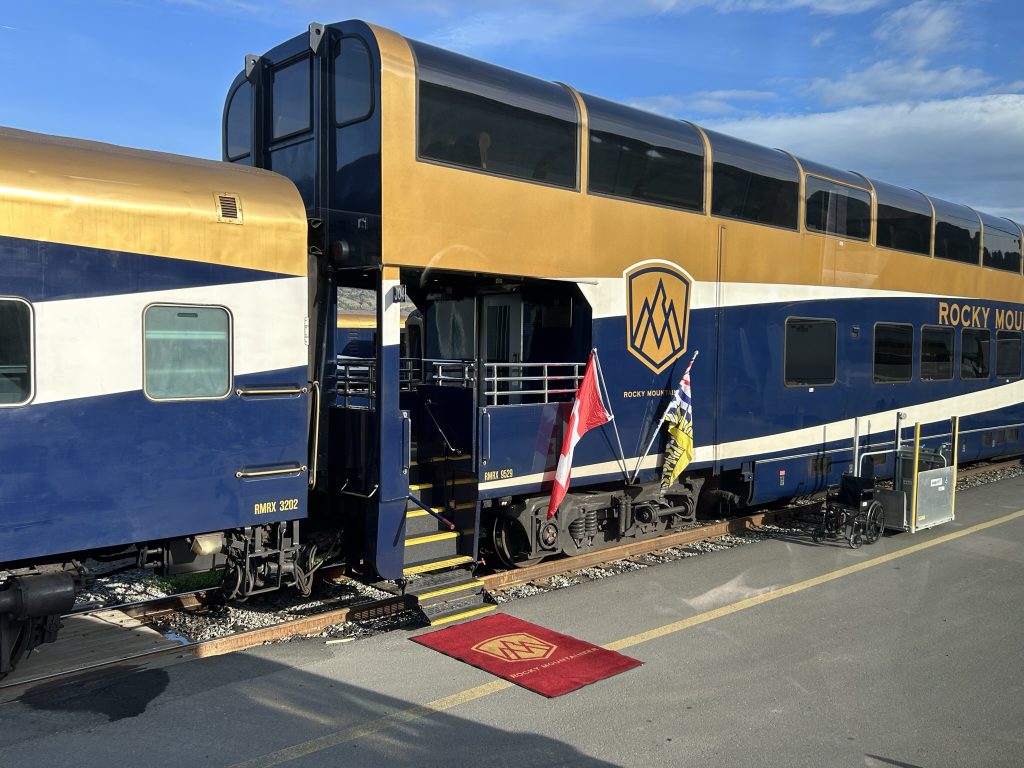Out-of-this-World Scenery Sparks Joy on a Maligne Lake Cruise
For our full day in Jasper after taking the two-day Rocky Mountaineer rail journey from Vancouver, we decide to take a all-day tour with Maligne Adventures to Maligne Lake that includes a stop at Maligne Canyon and a cruise on Maligne Lake.
We are blessed with a beyond-perfect day—a toasty 25C/78F degrees, clear blue skies, and spectacular views in every direction.
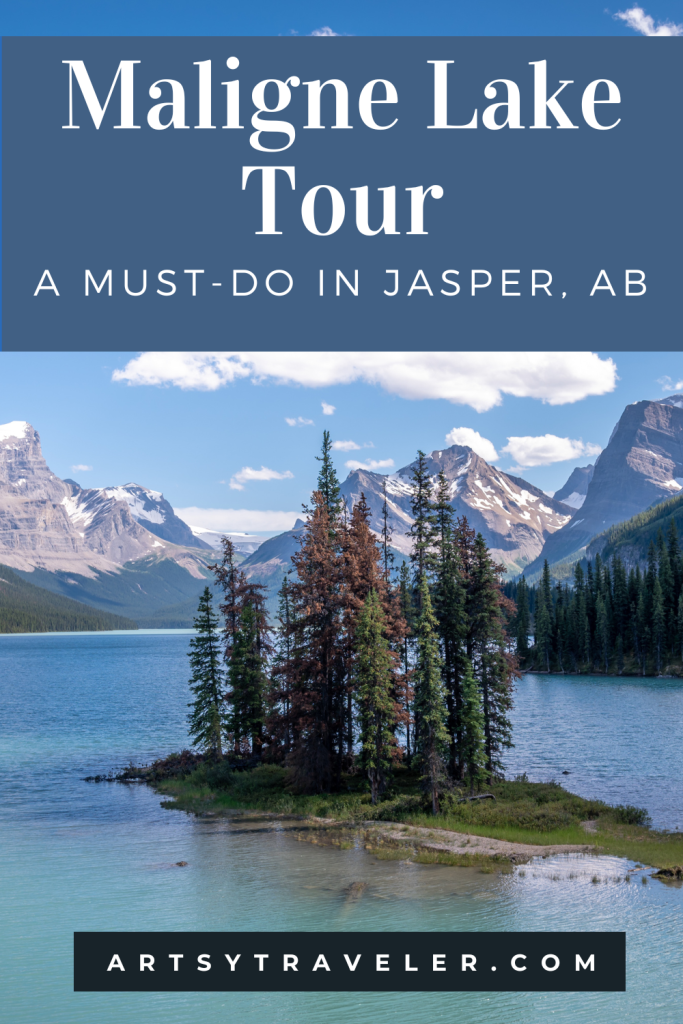
A Maligne Adventures bus picks us up promptly at 9:30 am and we meet our friendly driver and guide Chloe, who is from the UK. She is an enthusiastic and knowledgeable guide who makes sure our tour matches the perfection of the weather.
Map of the Tour
Here’s a map of the area we visited, starting with the town of Jasper (1):
In Search of Bear
After picking up about a dozen more travelers, Chloe tells us that her colleague leading another tour has just spotted a bear on a road that will require a slight detour. She wheels the bus around and heads uphill towards Patricia Lake in search of the bear. Alas, we don’t find her (she was a mum with cubs), but no matter. Chloe informs us that bear sightings are less common in August. If we really want to see bears in Jasper, we need to come in the spring.
This is the only bear we see while in the Rockies–a stuffed one in the lobby of our hotel!
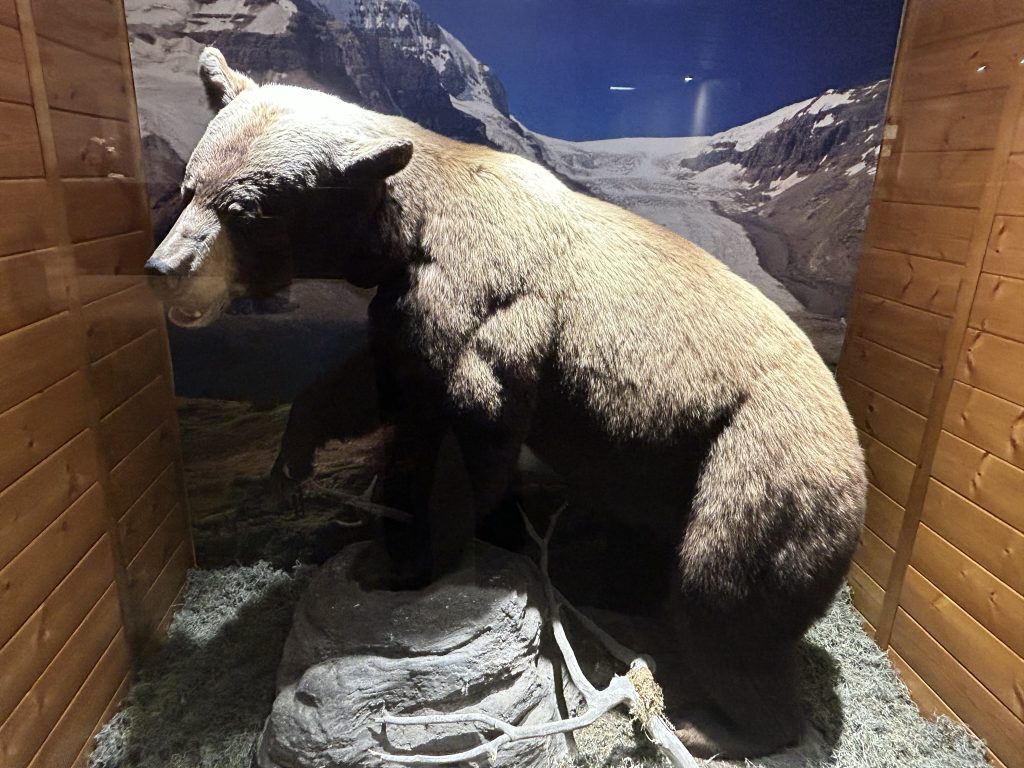
Learning About Local Wildlife
As she drives, Chloe provides a lively and informative commentary, mostly about the animals in the area. She reminds us that the animals are wild, including the huge, antlered elk often seen wandering the streets of downtown Jasper. They are most definitely not tame. She tells us that one of her colleagues recently had to intervene to save a child’s life when he spied the child’s family trying to put the child onto the back of a fully grown male elk like he was some kind of Rocky Mountain pony ride. Fortunately, he was able to stop them just in time to avoid what could have been a very nasty accident. Elk have extremely sharp hooves, not to mention deadly antlers.
We saw several elk on the trip, including these two–a male by the side of the road and a female in front of the Visitor Center in the middle of Jasper.
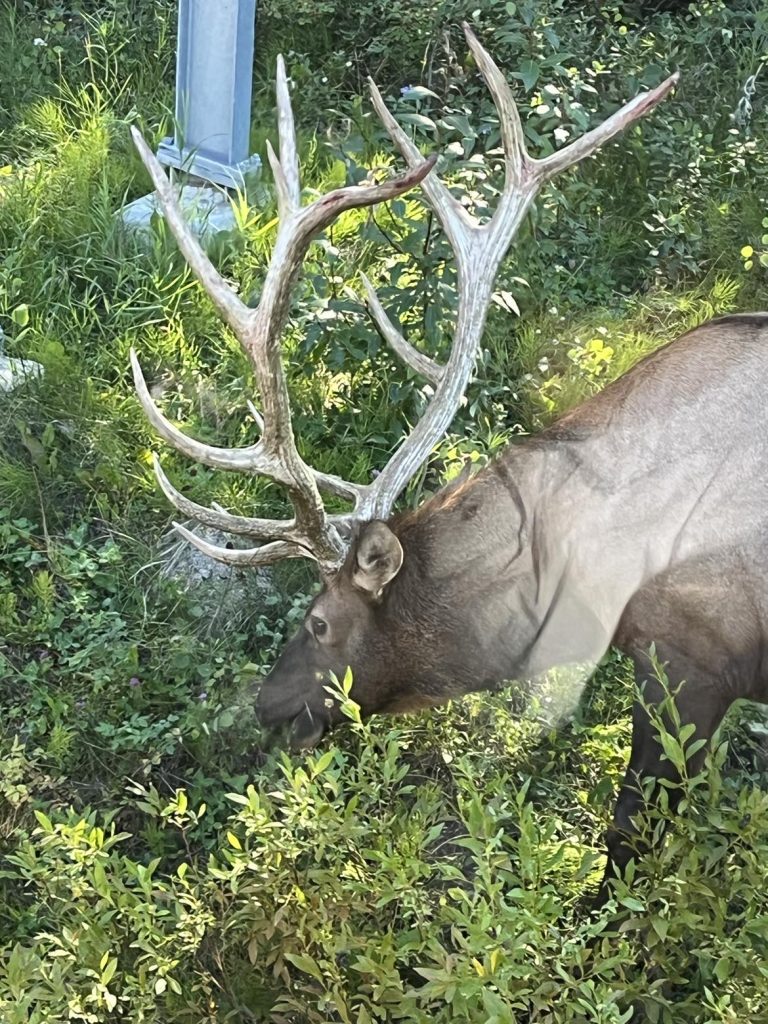
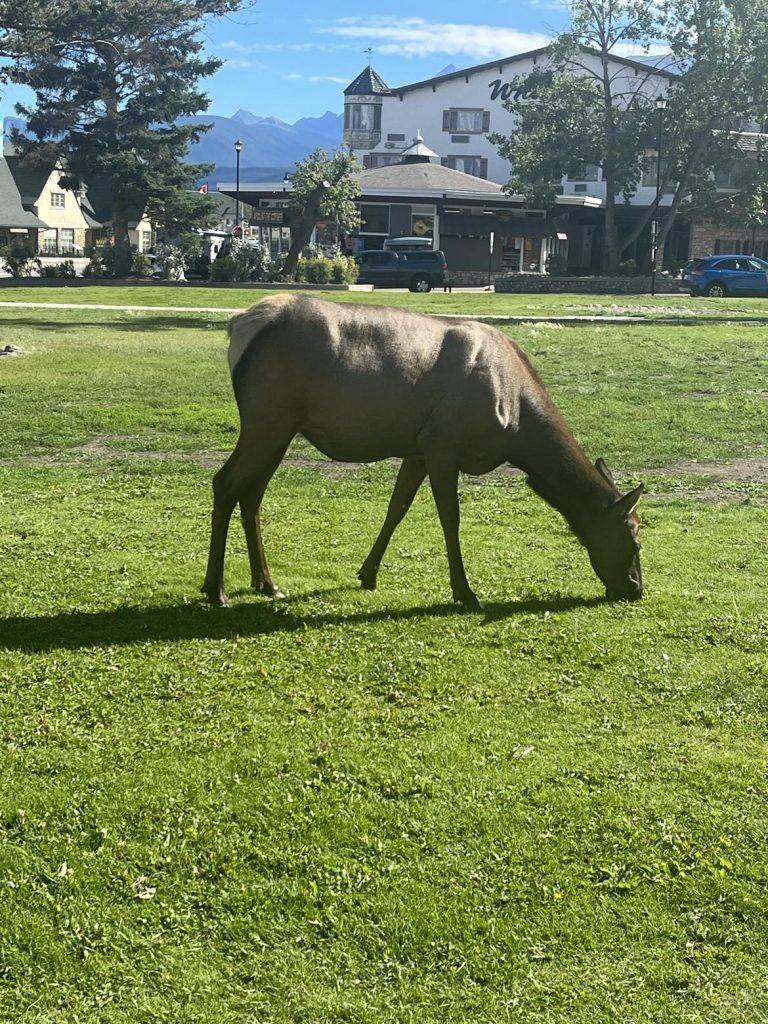
We learn later that Parks Canada will levy fines up to $20,000 on people who get out of their cars and approach wildlife. Good call! To their credit, Parks Canada does its best to try and keep bears away from humans. All garbage cans are bear-proof (and also pretty people-proof as I discovered when trying to open one to throw something away).
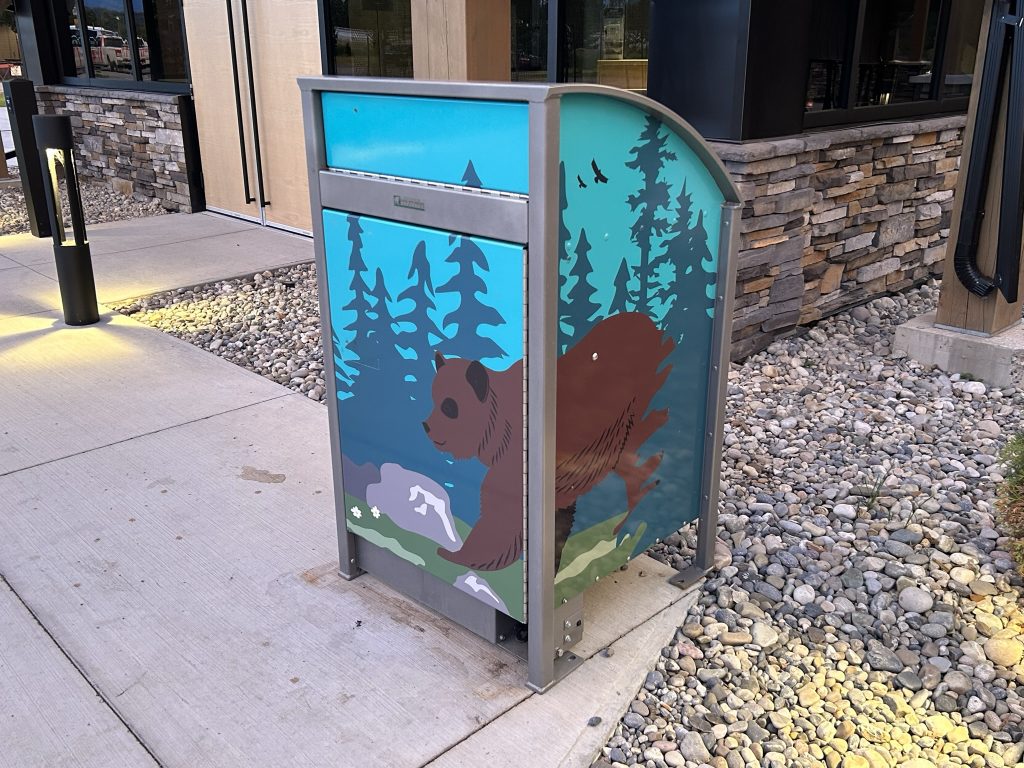
Bear Parts
After stopping to look at the elk by the side of the road, Chloe hands out two rubber bear claws made from the footprints of bears. The mold on the left is the paw print of a grizzly bear (yikes!) and the one on the right is the paw print of a black bear.
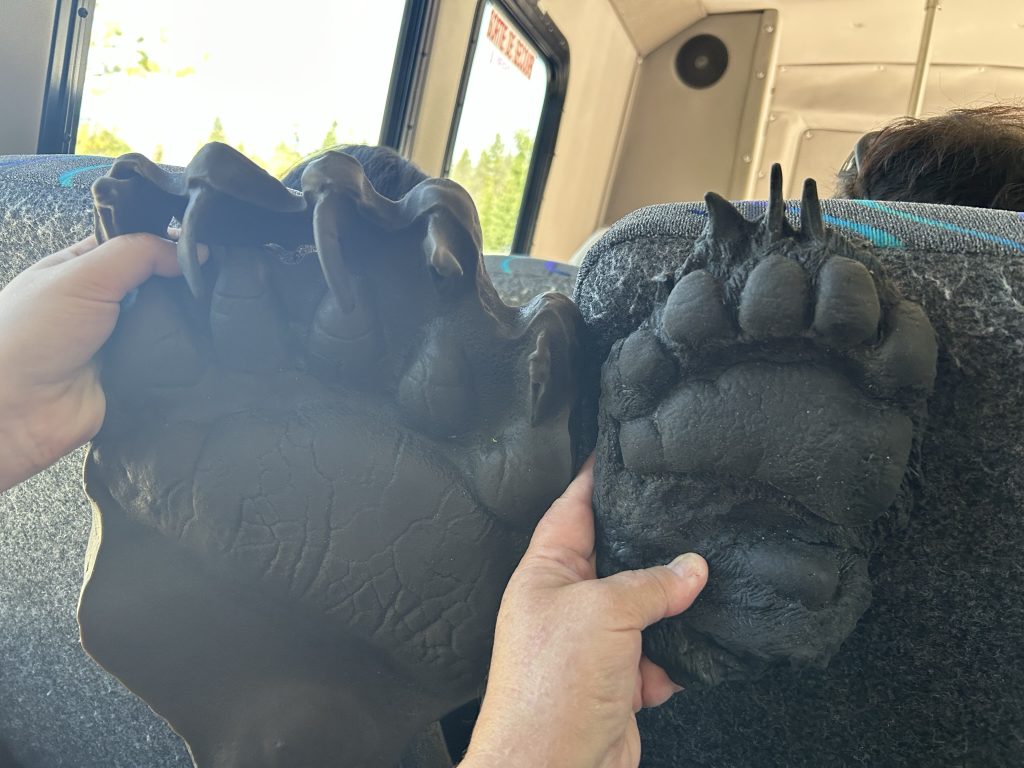
Chloe tells us the rhyme to remember when it comes to surviving a bear attack:
Black fight back, brown get down, white good night.
In other words, if the bear is black, you can fight back by yelling, throwing rocks, and making yourself look big. If the bear is brown (AKA a grizzly), lie on the ground face down (and presumably pray). If you’re faced with a polar bear, you’re toast. Polar bears don’t mess around. Neither do grizzlies, but apparently a grizzly attack may just be survivable. A polar bear attack is not.
I’d just as soon not meet any bear, except maybe a baby panda. If you get between a black bear and her cubs, you could still be in a for a nasty injury. I remember walking alone along a trail in Yellowstone National Park many years ago and feeling very, very nervous thanks to the many signs warning of bears (black & grizzly) in the area. I did a lot of loud singing and, after about a mile, decided that whatever view awaited me at the end of the trail wasn’t worth dying for and so turned back.
Maligne Canyon
Our next stop is Maligne Canyon where we leave the bus to do the short circuit around a portion of the canyon. It is incredibly deep and sculpted. Every time I lean over the edge to snap a picture, I worry that I might inadvertently let go of my phone. Chloe cheerfully informs us that if we drop our phones, we’re out of luck. She’ll not be going into the canyon to retrieve them! Not that she could. The water surges through the narrow canyon, every year sculpting more of the rocky sides into abstract waves. In winter, the river freezes and travelers can take guided hikes along the icy bottom. That would be pretty cool!
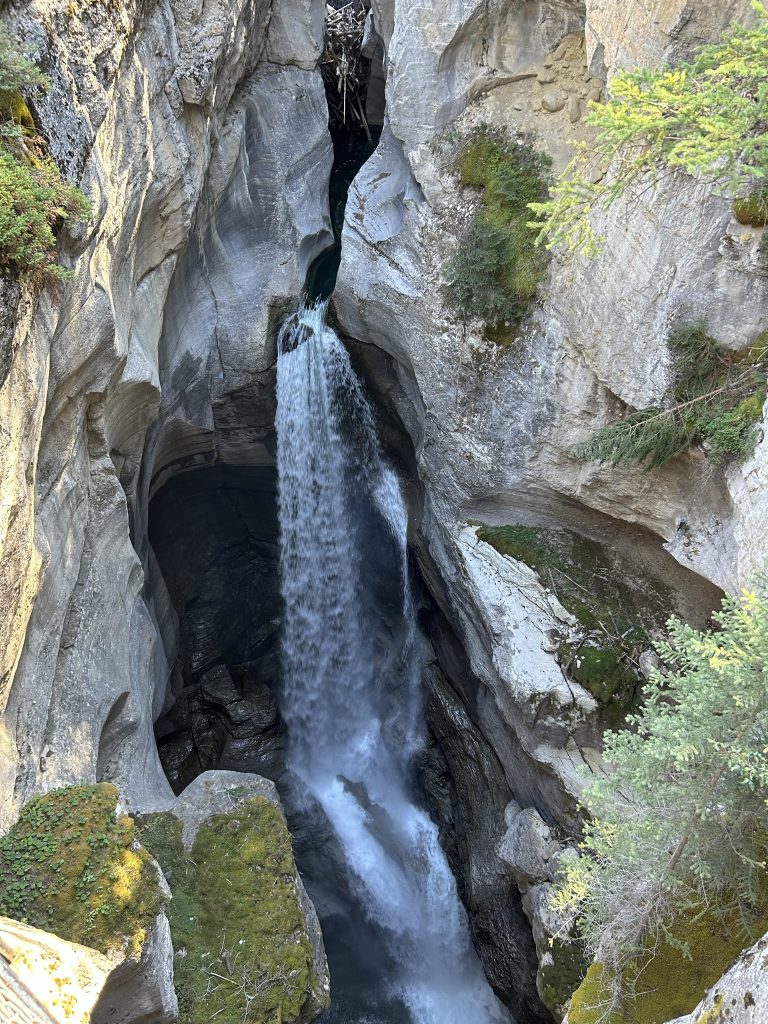
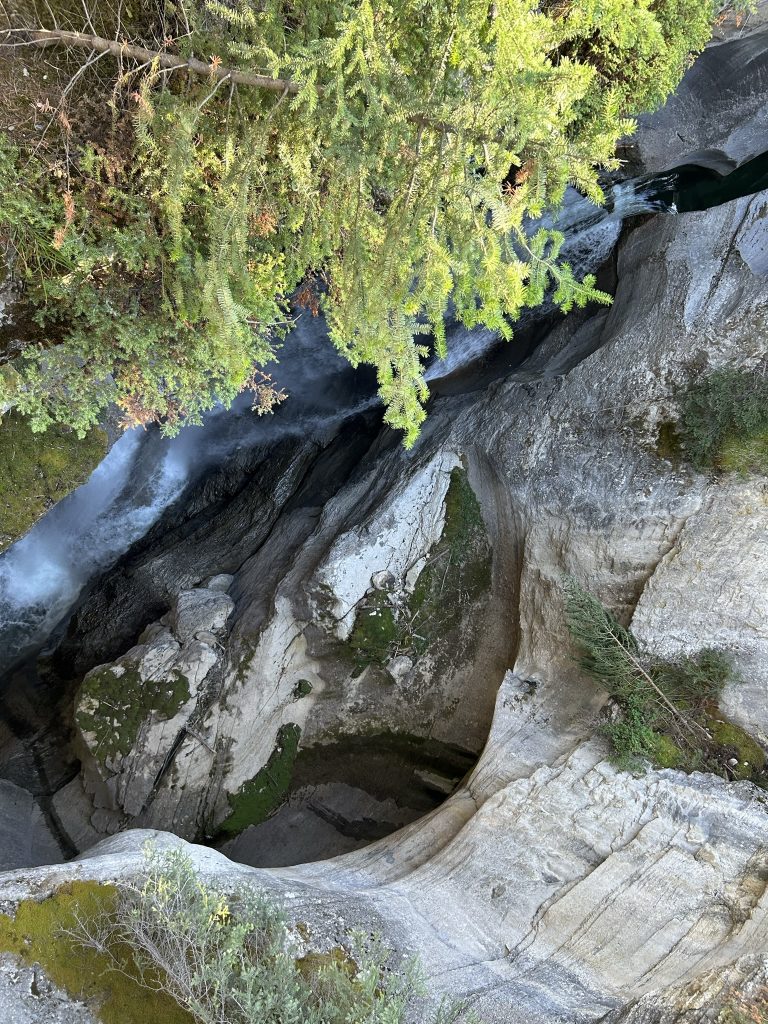
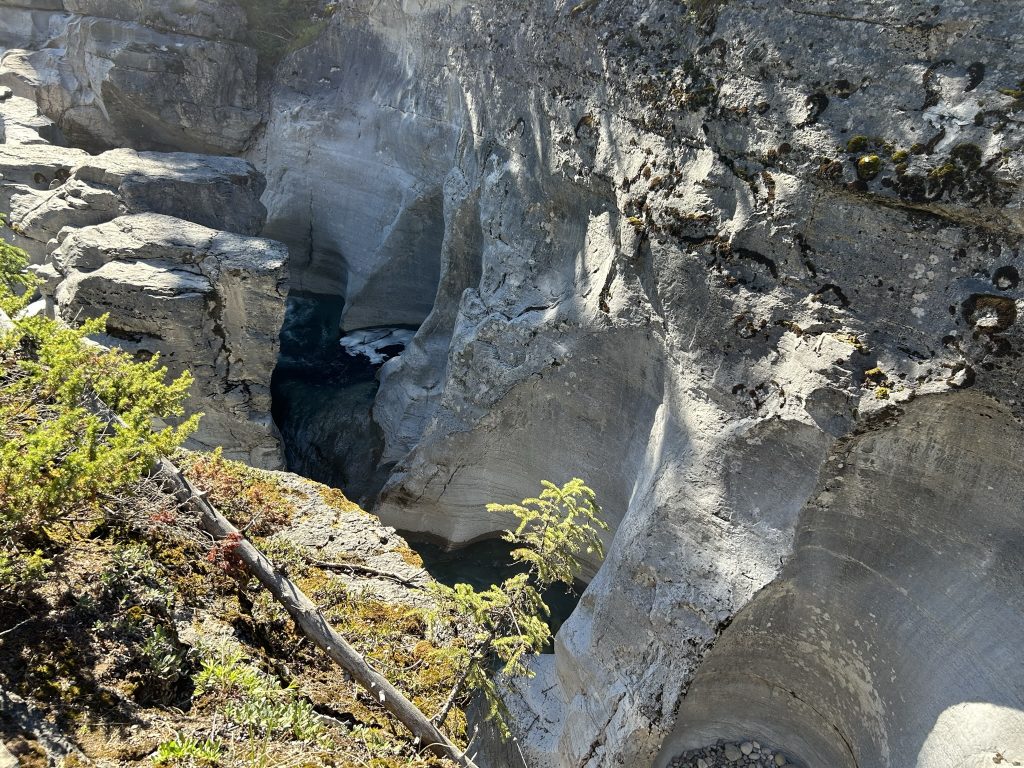
In Search of Berries
Chloe tells us that a typical bear eats about ten pounds of berries every day when they are getting ready to hibernate. She looks for a berry to show us and manages to find only one rather shriveled one that the bear that had just gone through the area had left behind. One of the people on the tour samples it and declares it very bitter.
We also learn about juniper berries and are each given one to sniff. I can’t place the odor until Chloe tells us that gin is made from juniper berries. They are certainly delightfully pungent.
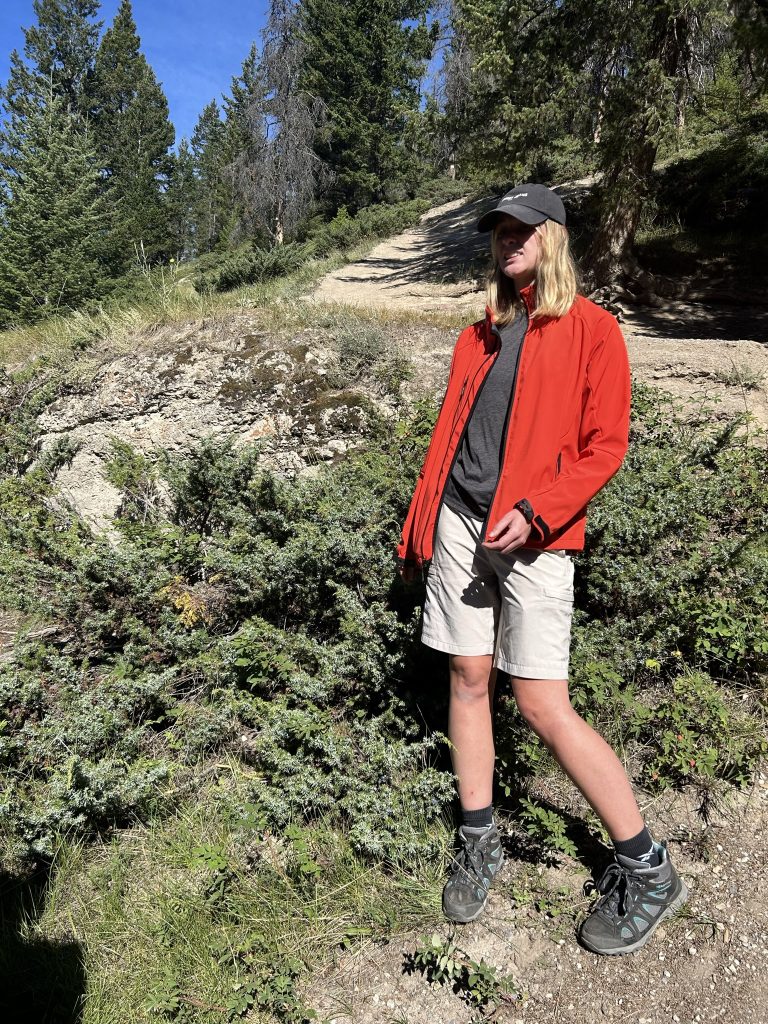
Disappearing Lake
Back on the bus, we continue on our way to Maligne Lake along an in-and-out road that skirts tranquil Medicine Lake, also called the Disappearing Lake because a unique underground drainage system causes the water level of the lake to vary from season to season, so that sometimes the entire lake disappears. Over the years, attempts have been made to plug the system to keep the water in, but to no avail.
The scenery encircling us is truly remarkable—endless peaks, steep hillsides, and an area that had been devastated by wildfire. The charred remains of the forest are another stark reminder of the power of fire.
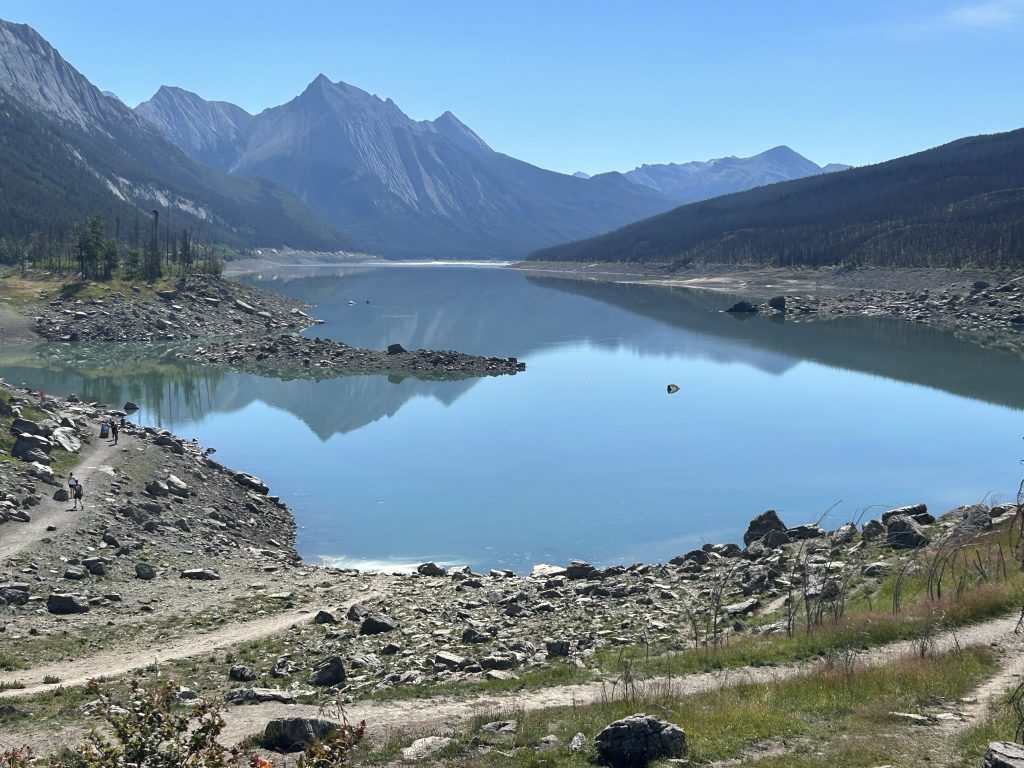
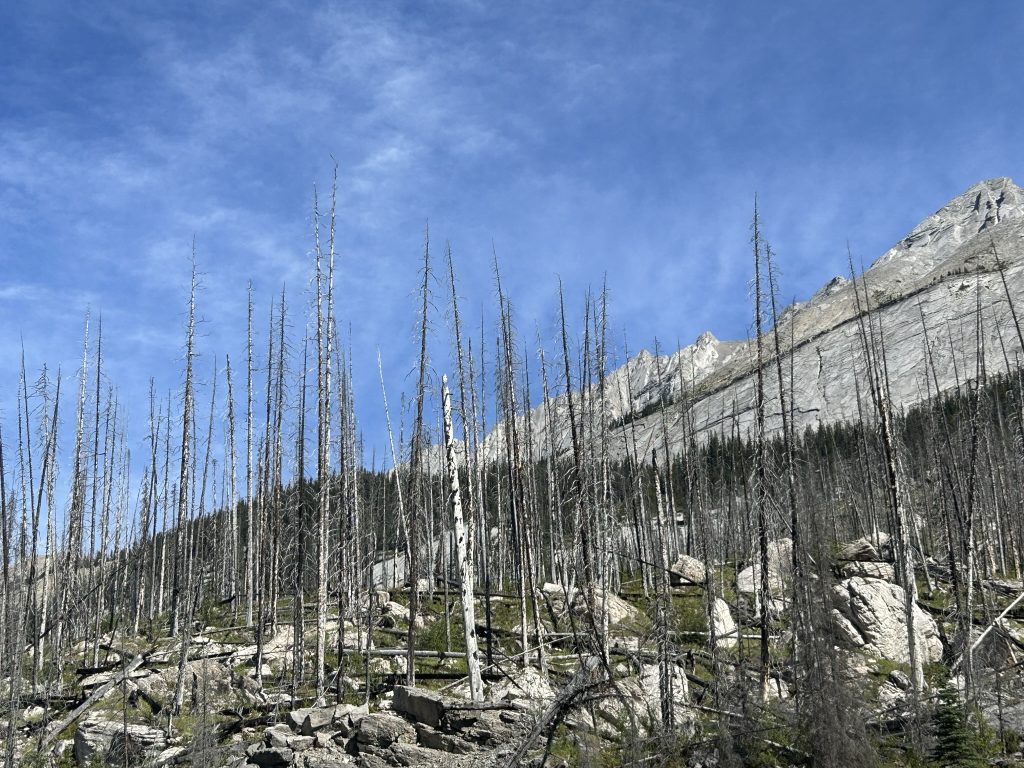
Maligne Lake Cruise
We arrive at Maligne Lake where we have a few minutes to pick up a sandwich at the restaurant and then wait on the dock for our boat. We settle on to a warm bench and watch the lake. The couple from New York that we ate breakfast with on the Rocky Mountaineer gets off one of the boats and waves as they pass.
The boats that ply Maligne Lake are quite small and low to the water, with bench seats fitting about 40 people (although I didn’t count!). After a short delay, we board and meet our crew—Seb the boat driver, and Dec the guide, who keeps up an entertaining and informative commentary for most of the journey.
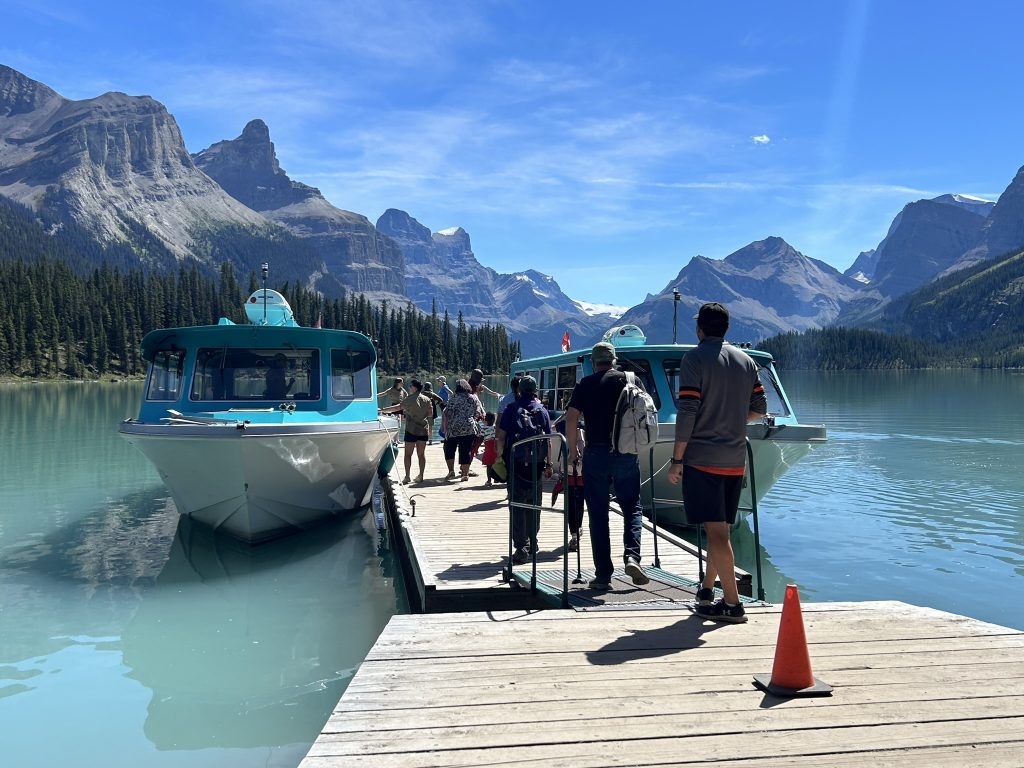
The views as we cross Maligne Lake are spectacular in every direction—truly one of the most beautiful lakes I’ve ever been on. We set off at a sedate pace so that our wake doesn’t upset the many people sharing the lake in canoes, kayaks and even on paddle boards. I don’t envy them. They are one slightly- too-high wake away from ending up in the lake and possible death from hypothermia if they don’t get out quickly enough. It’s a glacial lake, which means it is very, very, very cold.
You can canoe across Maligne Lake to Spirit Island (our destination) in about four hours. That’s a lot of canoeing. I’m happy to enjoy the 30-minute boat ride.
Seb revs the engine once he’s out of range of the small craft and we set off for Spirit Island. I don’t know what to expect, having read nothing nor even looked at any pictures of the lake prior to our tour. Julia told me this was the tour to take and so here we are. I rather like that I have no idea what’s in store.
En Route to Spirit Island
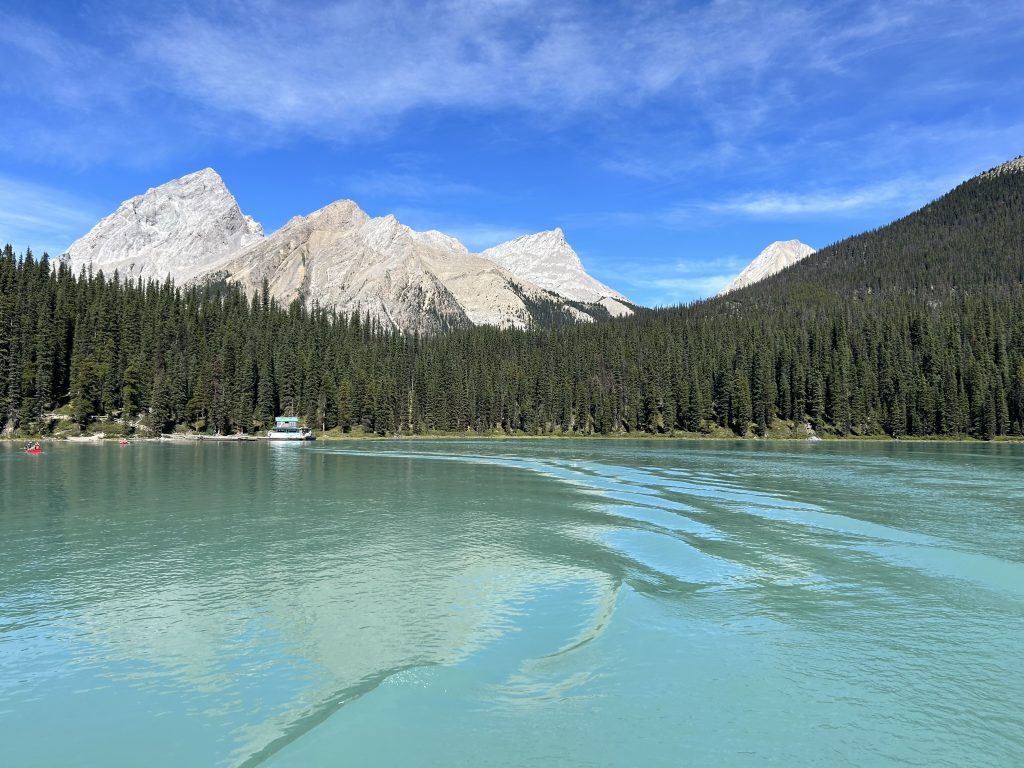
We round a bend in the lake to see tiny Spirit Island just ahead. It is actually an isthmus rather than an island, at least most of the time. If the lake water rises, the narrow strip of land connecting the island to the mainland is submerged.
Spirit Island is sacred land to the First Nations peoples who originally hunted and lived along these shores. As a mark of respect, visitors are forbidden to step foot on the island. We will pull into shore close by for a fifteen-minute visit on the mainland overlooking the island and the view.
Dec tells us to keep our gaze fixed on Spirit Island and asks us to figure out why it is so special. I dutifully stare at the island—more of a small outcropping iced with narrow, Alpine trees than an actual island. I confess I can’t see what’s so special about it, although I dutifully shoot a short video.
The Hall of the Gods
Our guide tells us to shift our gaze from Spirit Island to behold the view from the island. OMG! Aptly named the Hall of the Gods, the mountains rising imperiously at the far end of the lake are beyond breathtaking. Pictures can’t do justice to the view. This is a 3-D experience no flat photo can capture. Of course, that doesn’t stop every person on the boat from spending the next fifteen minutes on shore clicking away.
We certainly do! Here are just a few of the many pictures we snapped.
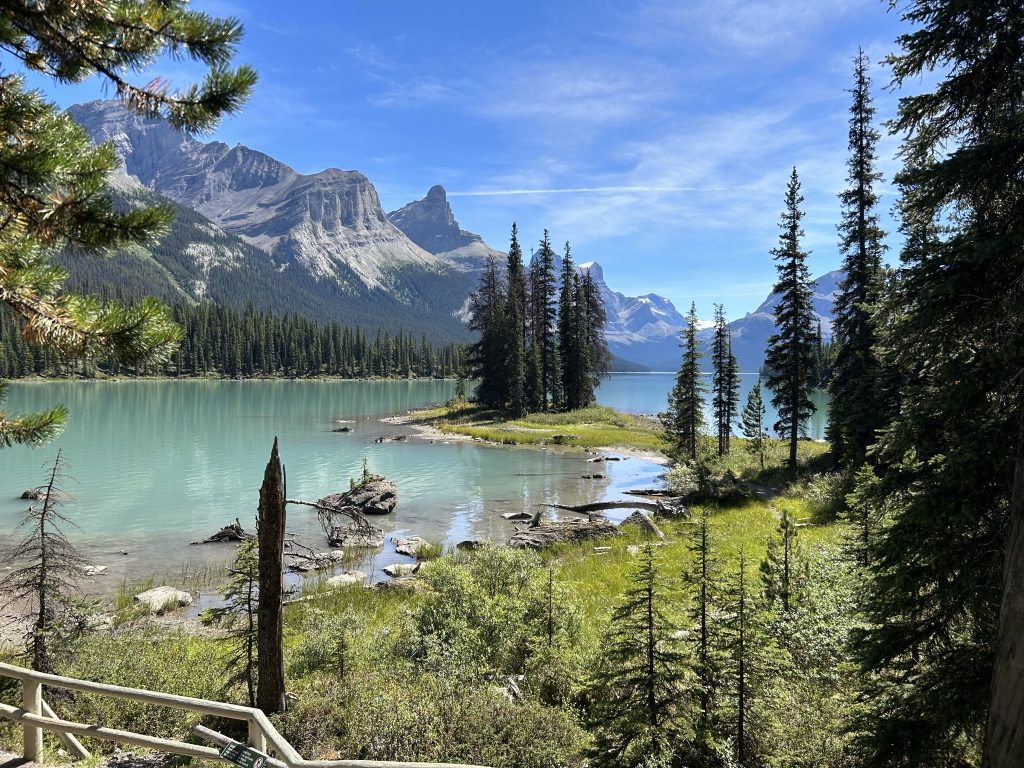
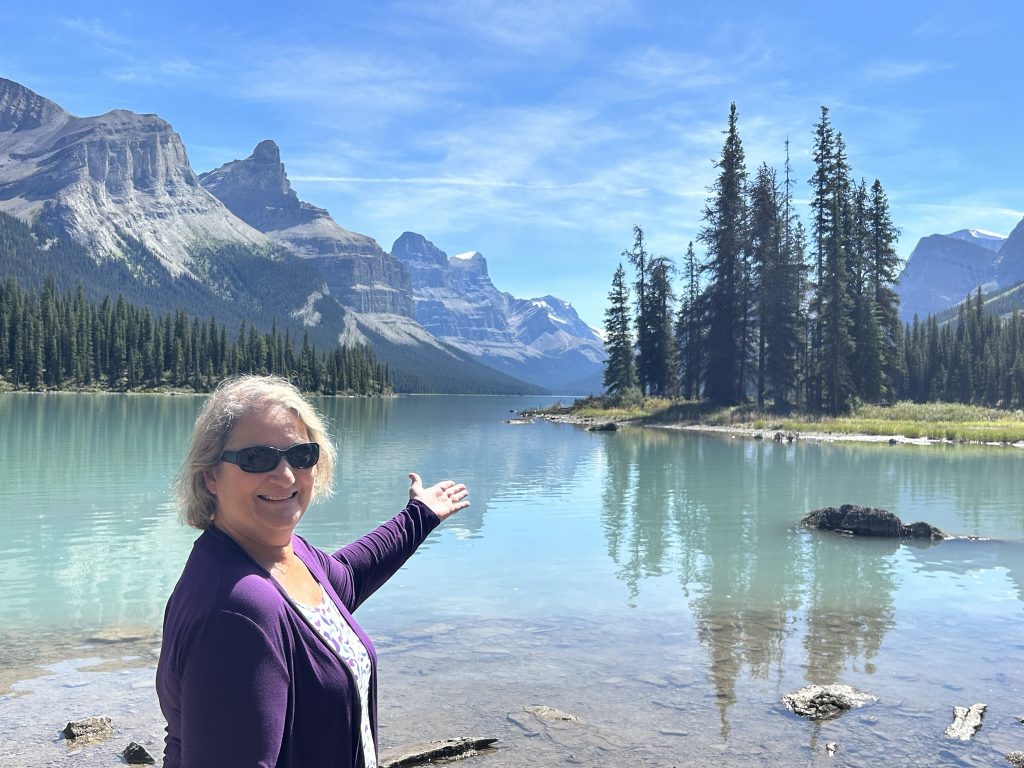
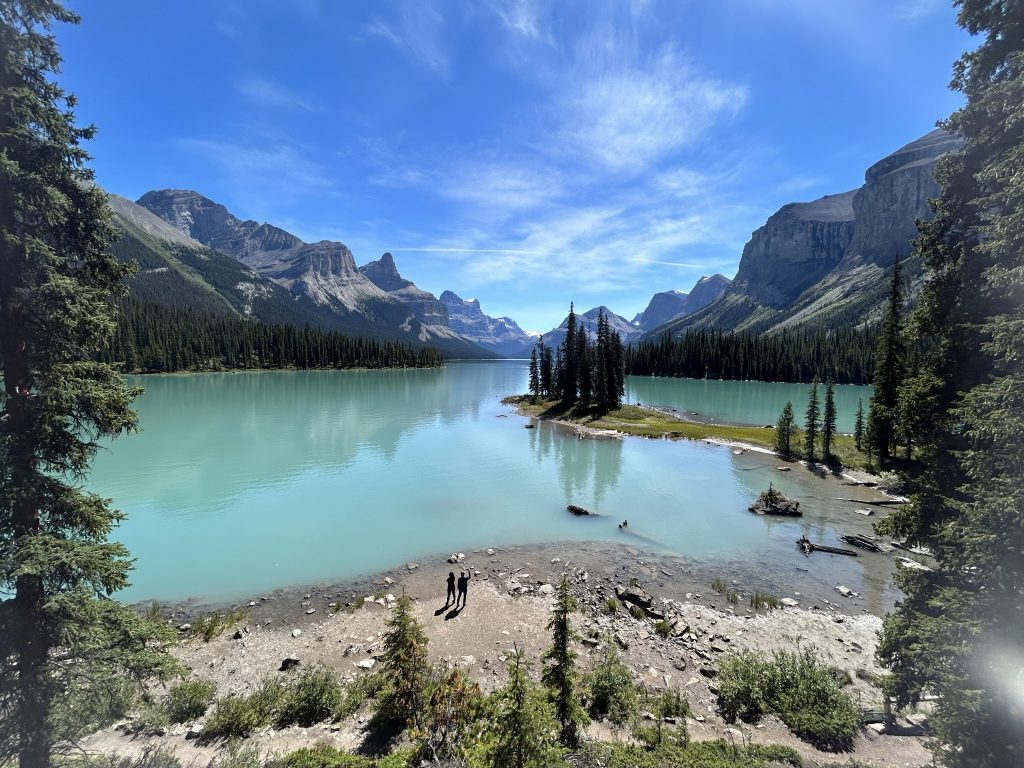
I feel like I’ve won the tourism lottery. This view will stay with me long after I leave the area. There is definitely something indefinably spiritual about it. No wonder the First Nations made the island overlooking it sacred.
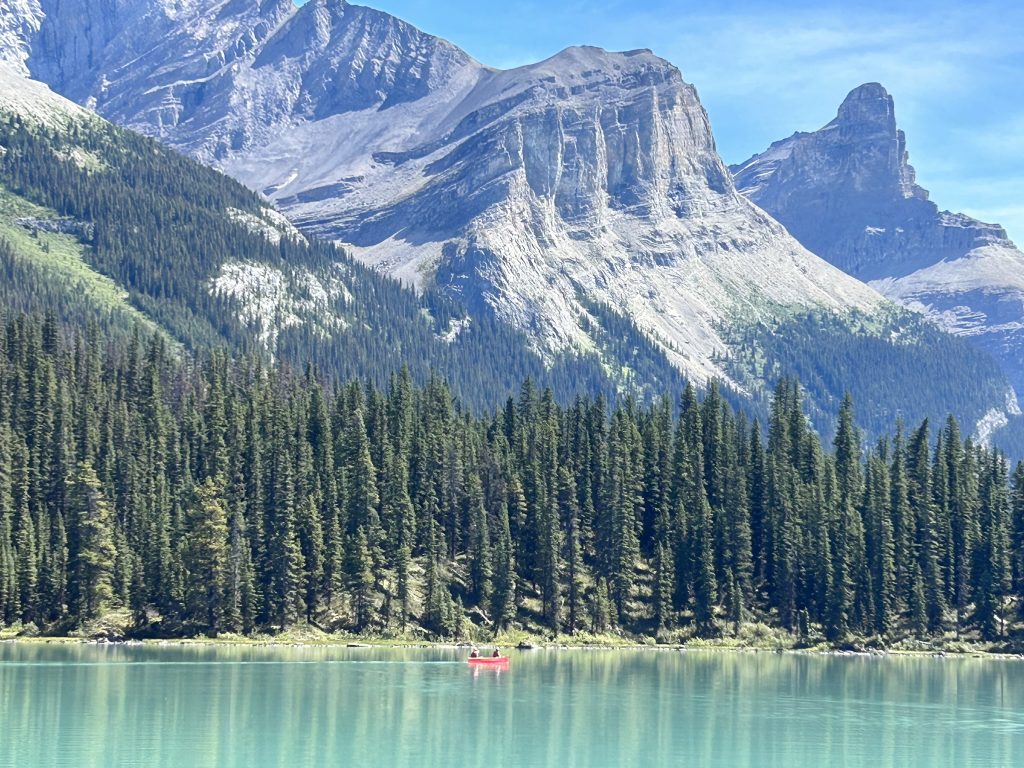
On the way back across the lake, Dec shares more information about recent efforts by local First Nations people to reclaim their connection to the area. After many decades of separation from land that the government controls as part of Jasper National Park, the descendants of the original inhabitants return every year to conduct ceremonies on Spirit Island and throughout the area. Dec tells us that one of the hallmarks of their culture is to thank the natural forms we see around us every day–to say thank you to the mountains, the lake, the trees, and the bear, wolf, elk, and chipmunk. Doing so celebrates our connection with nature, and reminds us that we are not separate from it.
Take the Cruise
The Maligne Lake cruise is a must-do during a trip to Jasper, but make sure you book it well in advance. Several people on our tour had booked with Maligne Adventures after all seats on the boats (run by a different company) were already filled. Instead of taking the cruise, they went on a 90-minute hike with Chloe to Moose Lake where they hoped to see moose. Unfortunately, they did not see moose, but the hike on the brilliantly sunny day was a hit.
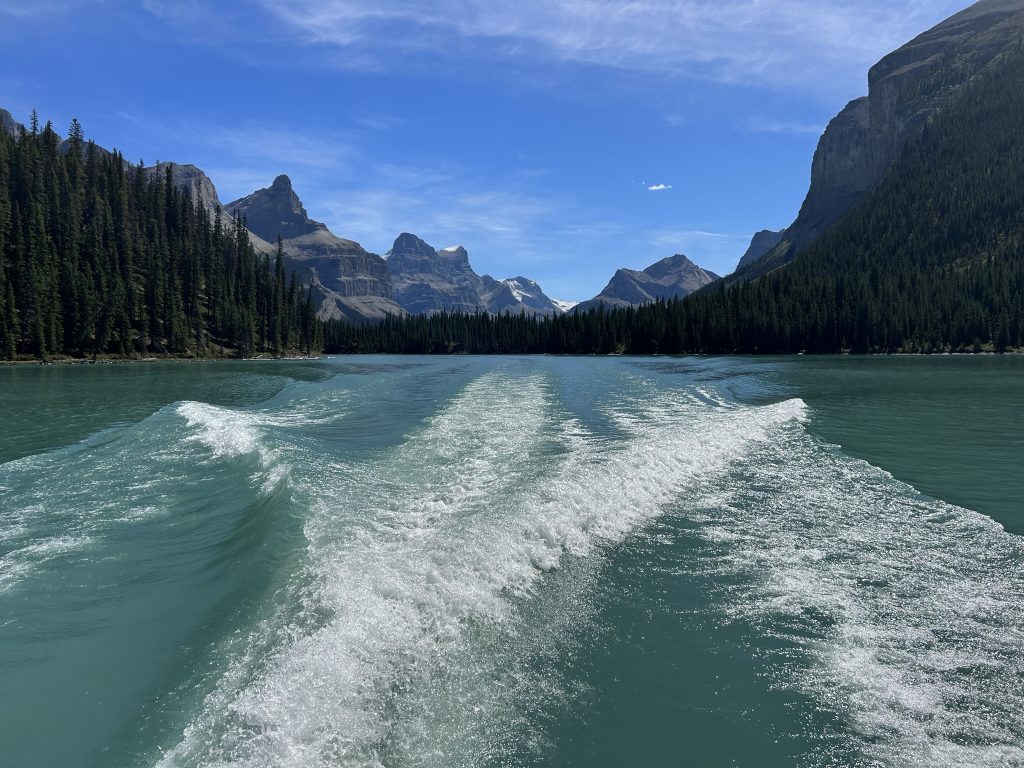
On the drive back to Jasper, Chloe continues to share her knowledge about the flora and fauna of the area. We pass an eagle’s nest and learn that eagles mate for life and return to the same nest year after year, repairing and adding to it to accommodate a new brood. An eagle’s nest can weigh over 1000 pounds.
An Afternoon in Jasper
Chloe drops us off in downtown Jasper and we wander around in the heat for a few hours, checking out the shops (not terribly exciting, to be honest), taking the obligatory photos with Jasper Bear statues, and grabbing dinner. We also see a female elk calmly munching the grass in front of the Visitors Center. She is not remotely bothered by the tourists snapping photos while keeping a respectful distance. Thankfully, we don’t see anyone trying to put their child on her back.
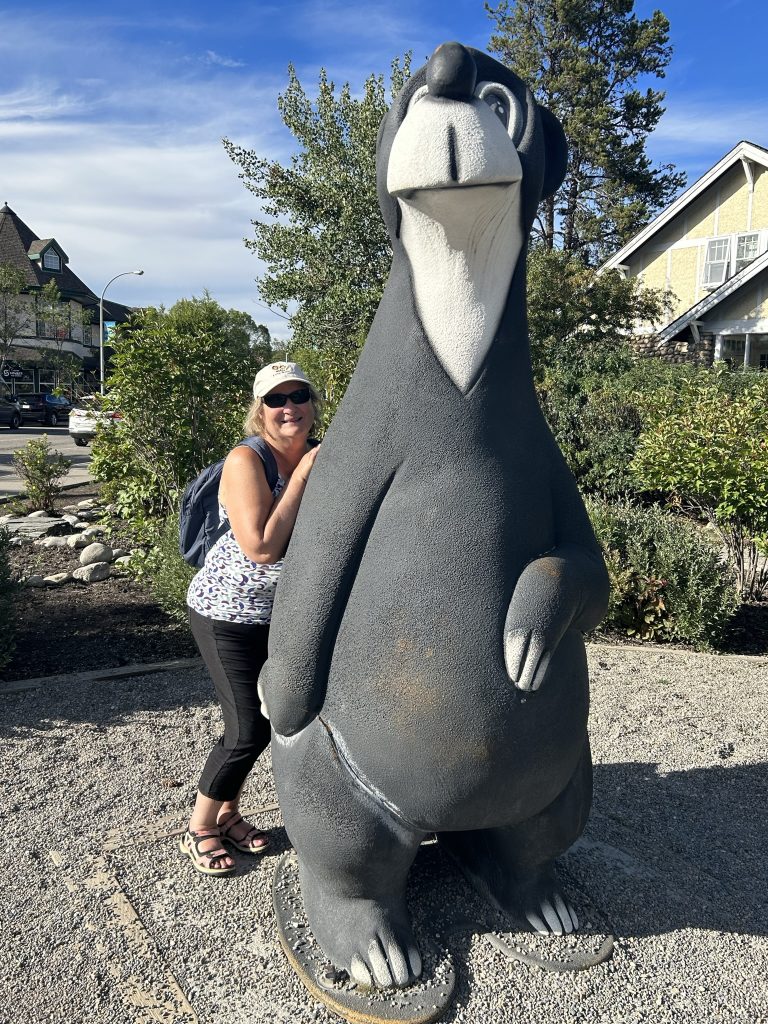
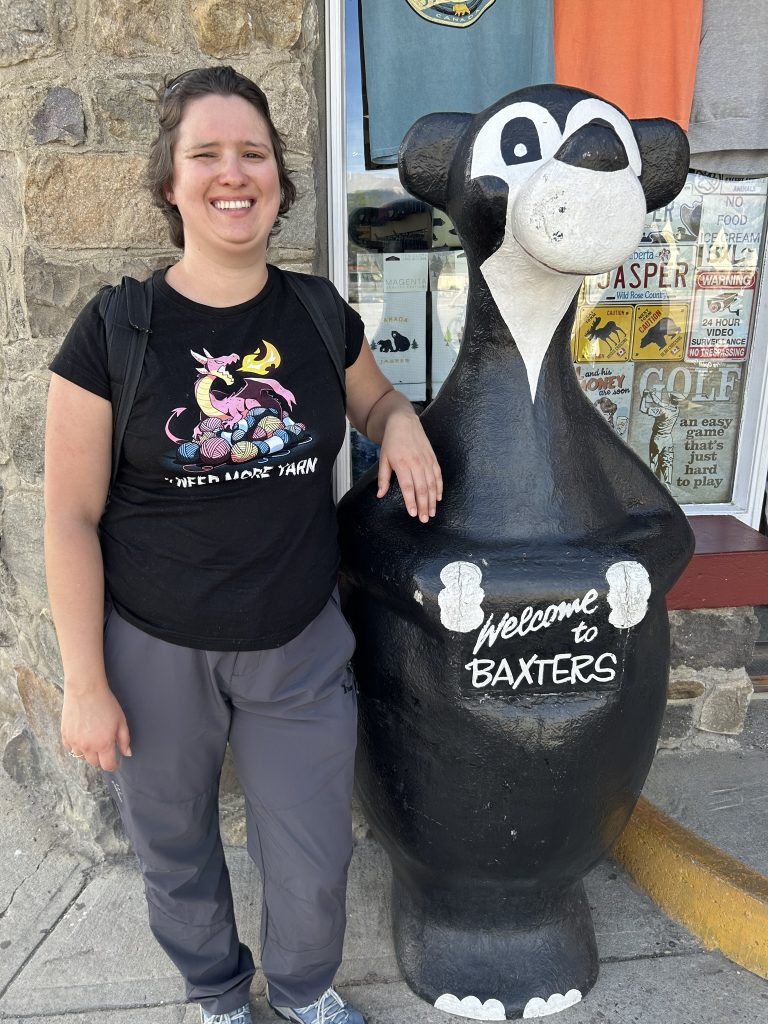
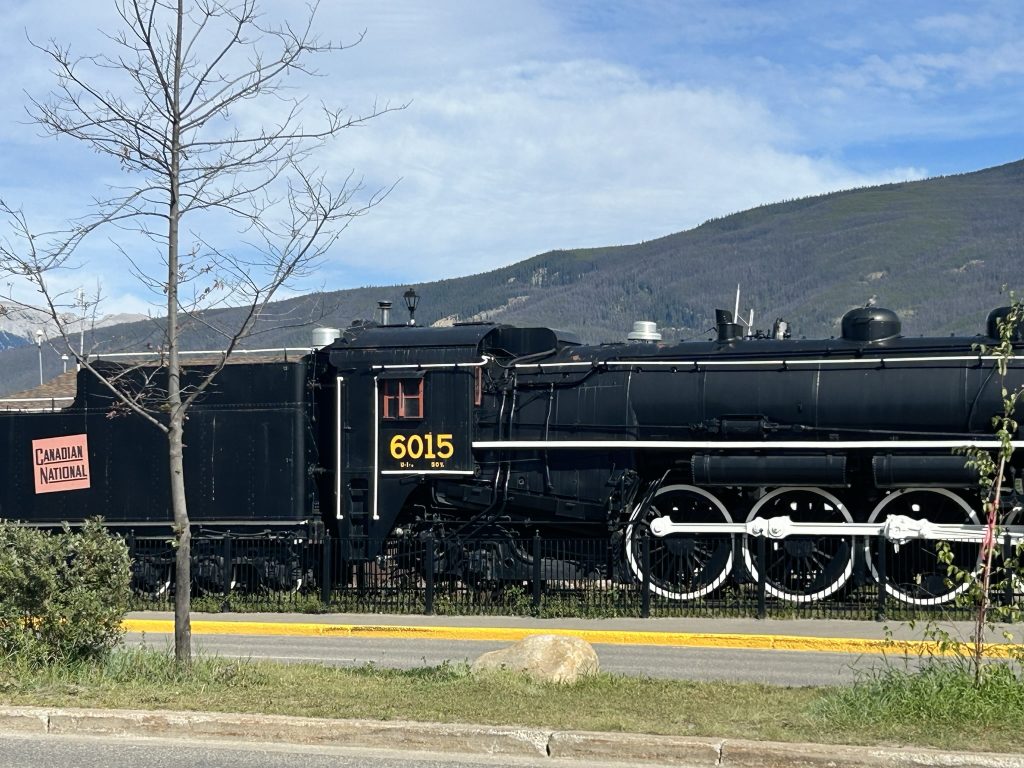
By the time we walk the twenty minutes back to the Forest Park Hotel, we have just enough energy left for a quick dip in the pool and a soak in the hot tub. Later in the evening, we wander out to see the sunset blow up the sky above the mountains ringing Jasper.
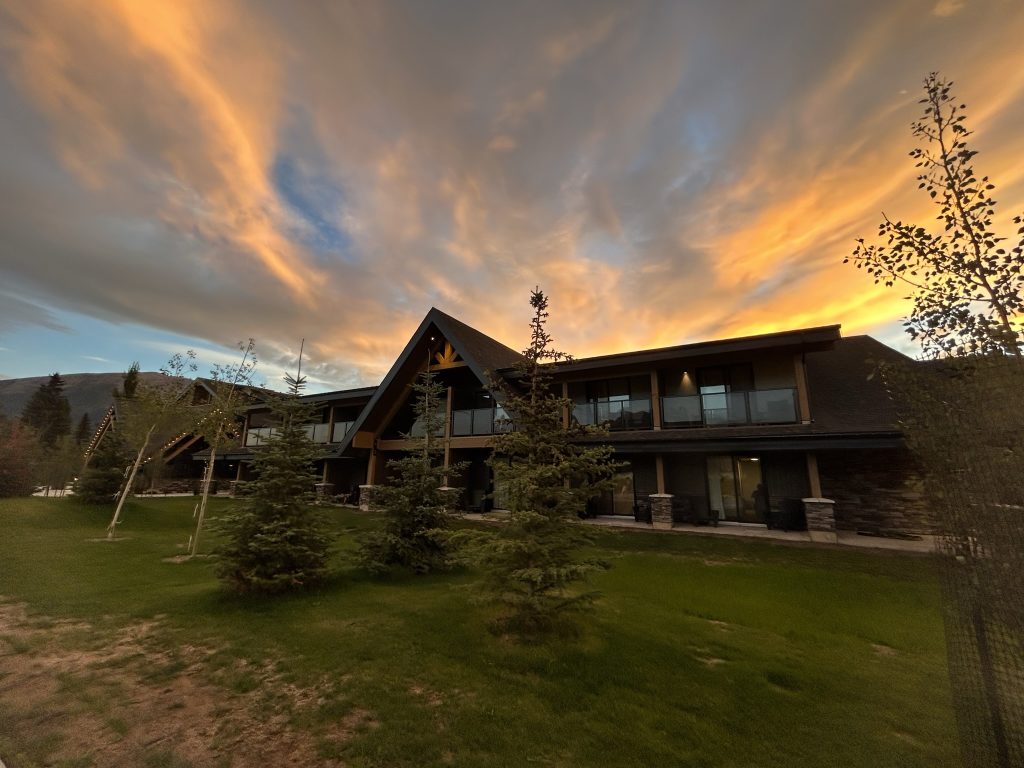
Accommodations in Jasper
Our accommodation at the Forest Park Hotel in Jasper was stylish and comfortable. The spacious room included a balcony with a good view over the parking lot and the mountains. Considering Jasper is ringed by mountains, it’s pretty hard not to get a view of mountains no matter where you stay. The Forest Park Hotel is a good choice when staying in Jasper, particularly if you are driving. It is a fairly stiff twenty- minute walk from the main part of Jasper.
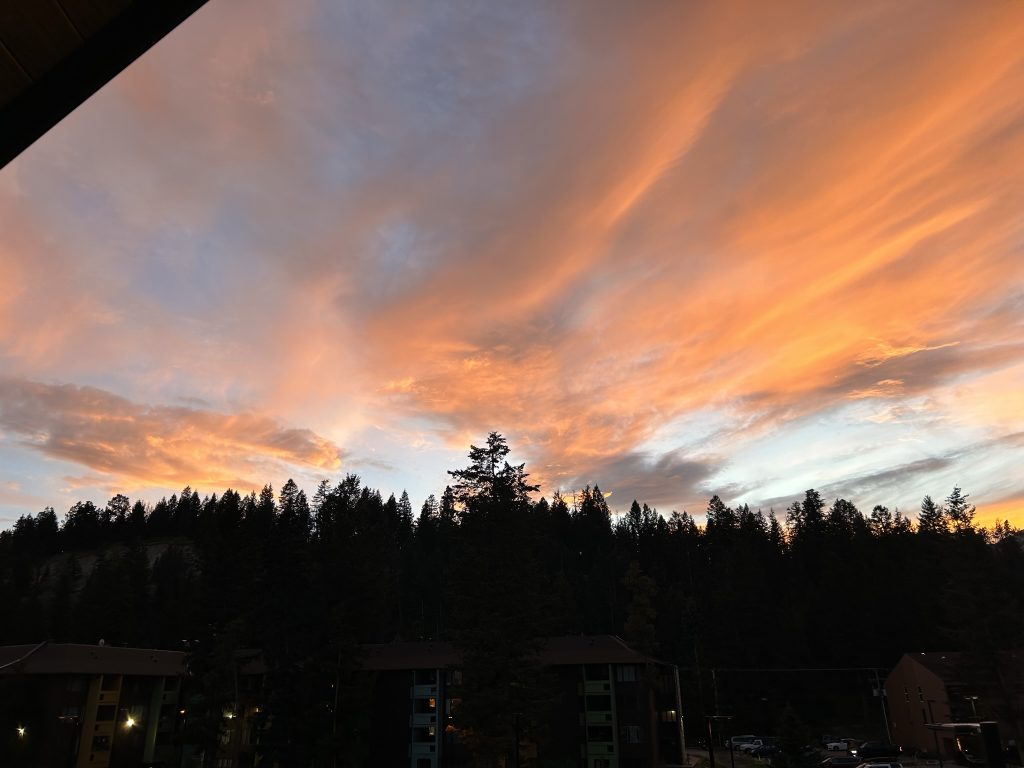
Here are other accommodation options in Jasper. Note that Jasper is an extremely popular destination in the Canadian Rockies, which means that hotels regularly sell out. When Julia booked the Forest Park Hotel for us over six weeks before our trip, she got one of the last rooms. People who arrive in Jasper during the summer without booked accommodation are often obliged to drive many hours to find a place to stay. Jasper is pretty remote! So definitely plan ahead! Oh – and be prepared for some serious sticker shock. Hotels in Jasper are not budget, even the budget ones!
More Jasper Sightseeing Options
Conclusion
Have you traveled to the Canadian Rockies? Share your experiences and recommendations with other Artsy Travelers in the Comments below.
Here are three posts to read next to help you plan a trip to Canada (my home country):
- Experience Western Canada in Style on the Rocky Mountaineer
- Food as Art at the Fireworks Feast at the Inn at Bay Fortune on Prince Edward Island
- National Gallery of Canada: Top Picks for the Artsy Traveler
